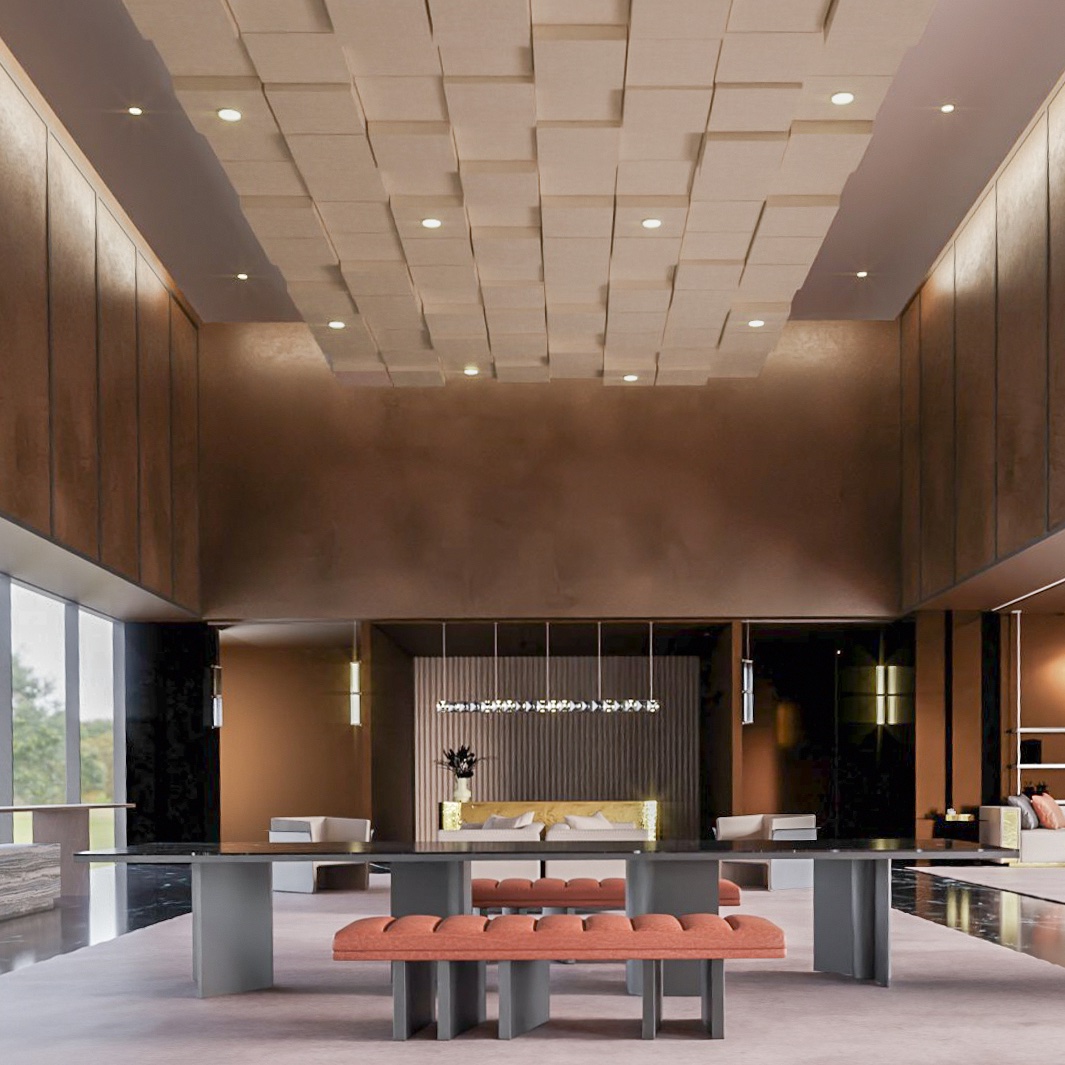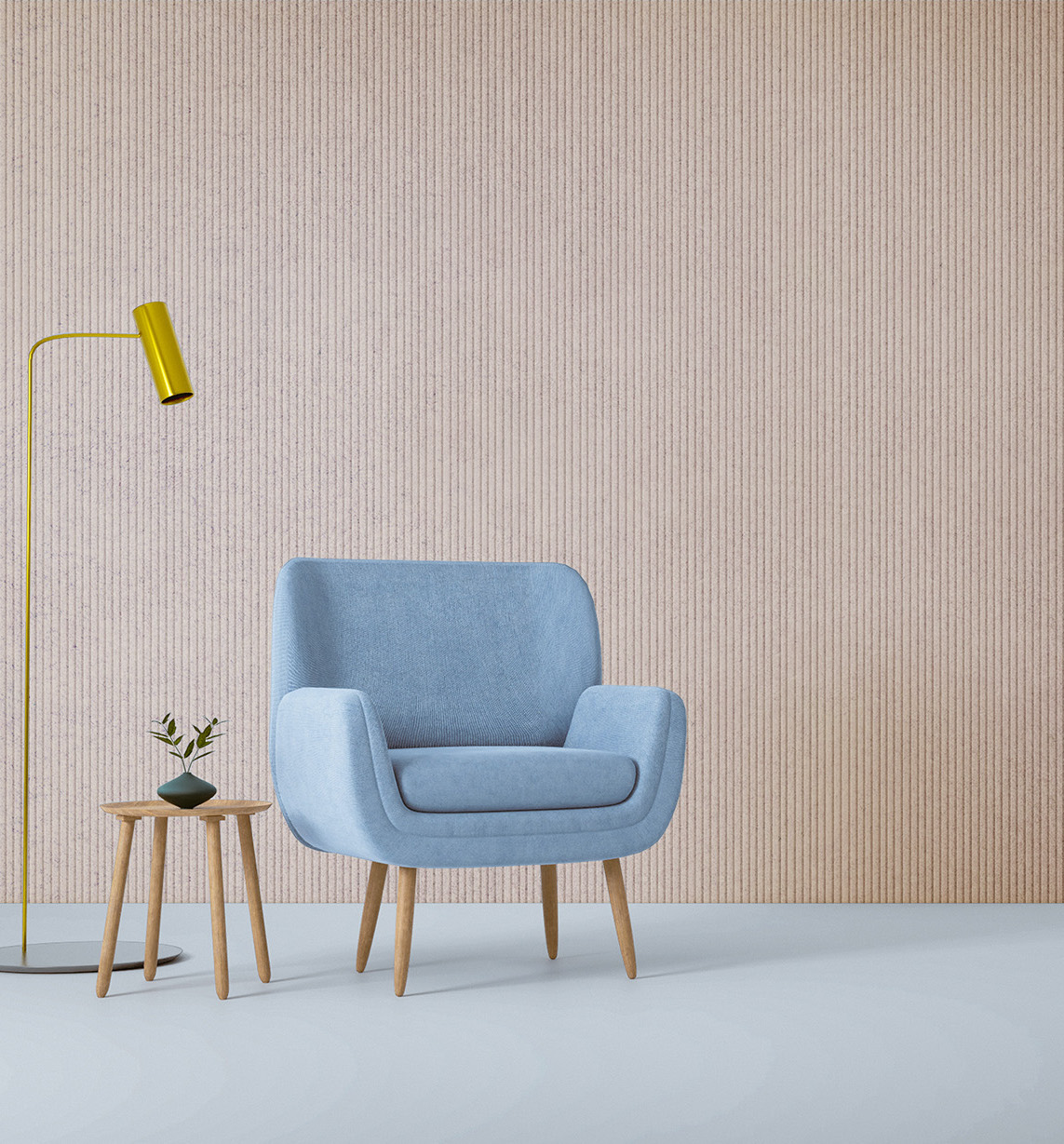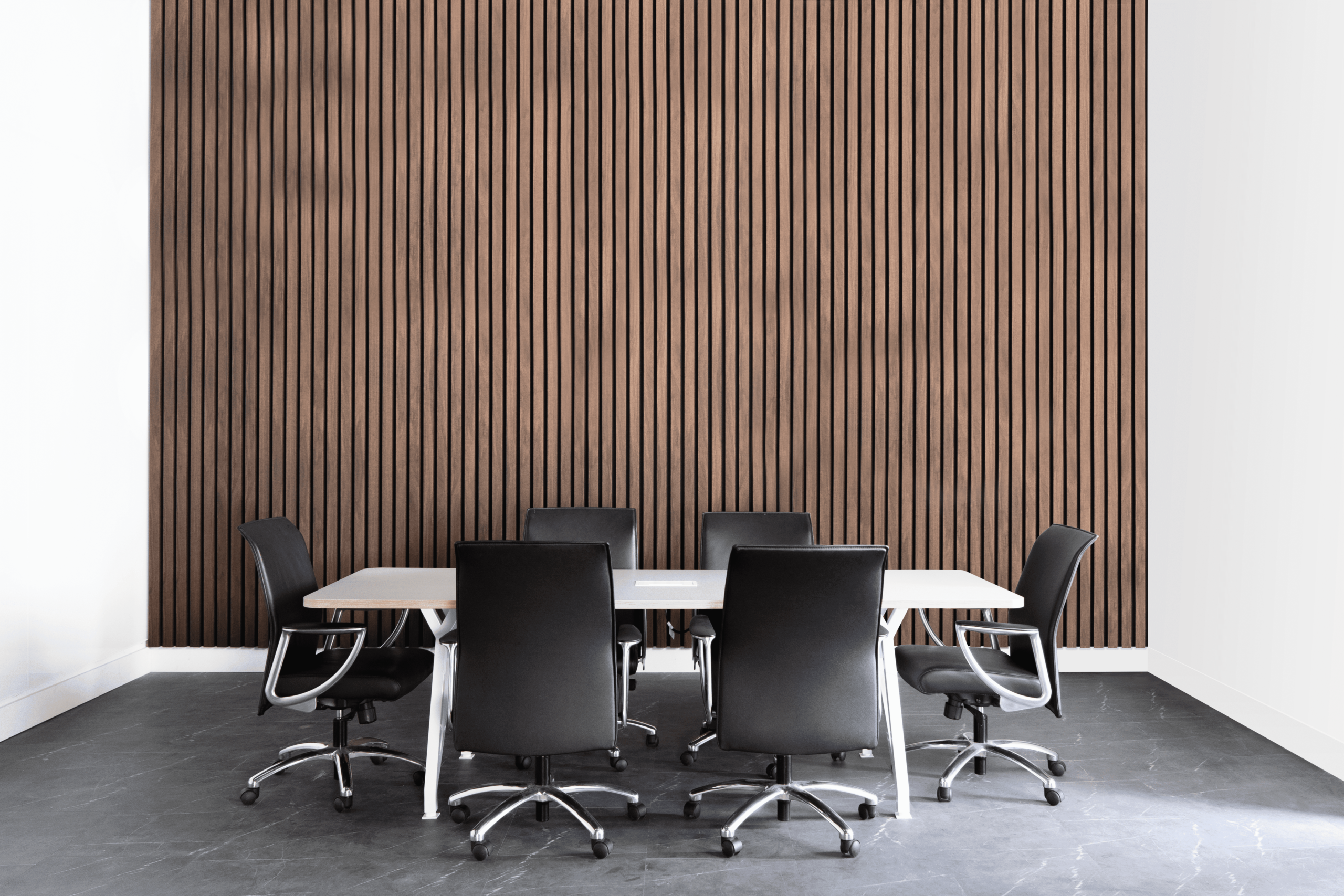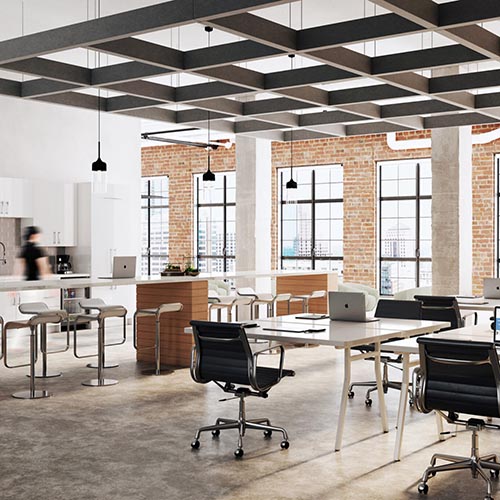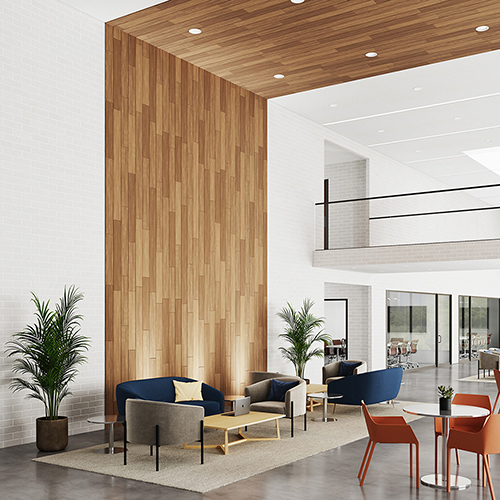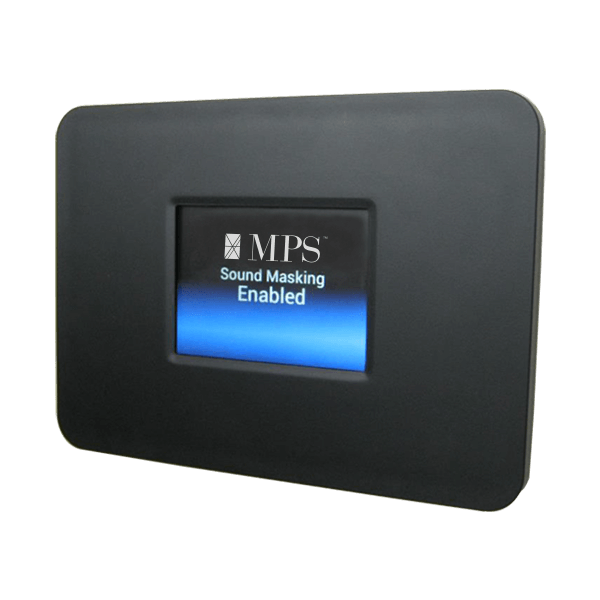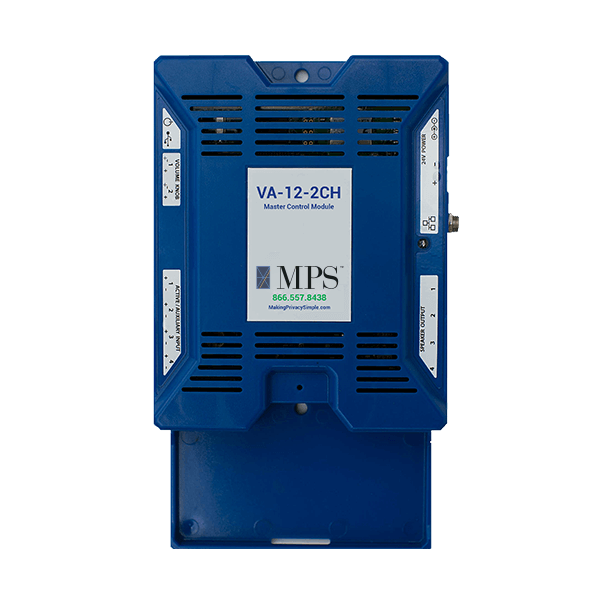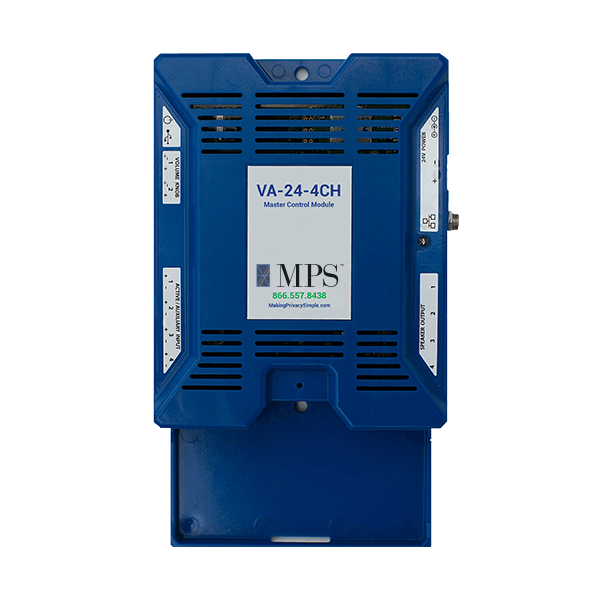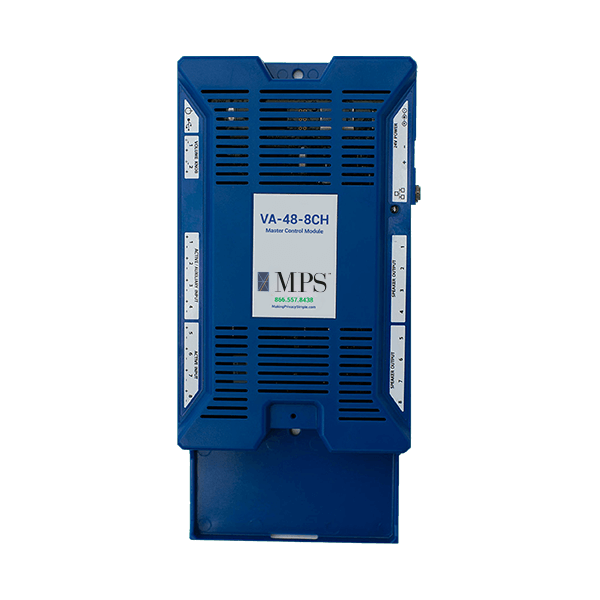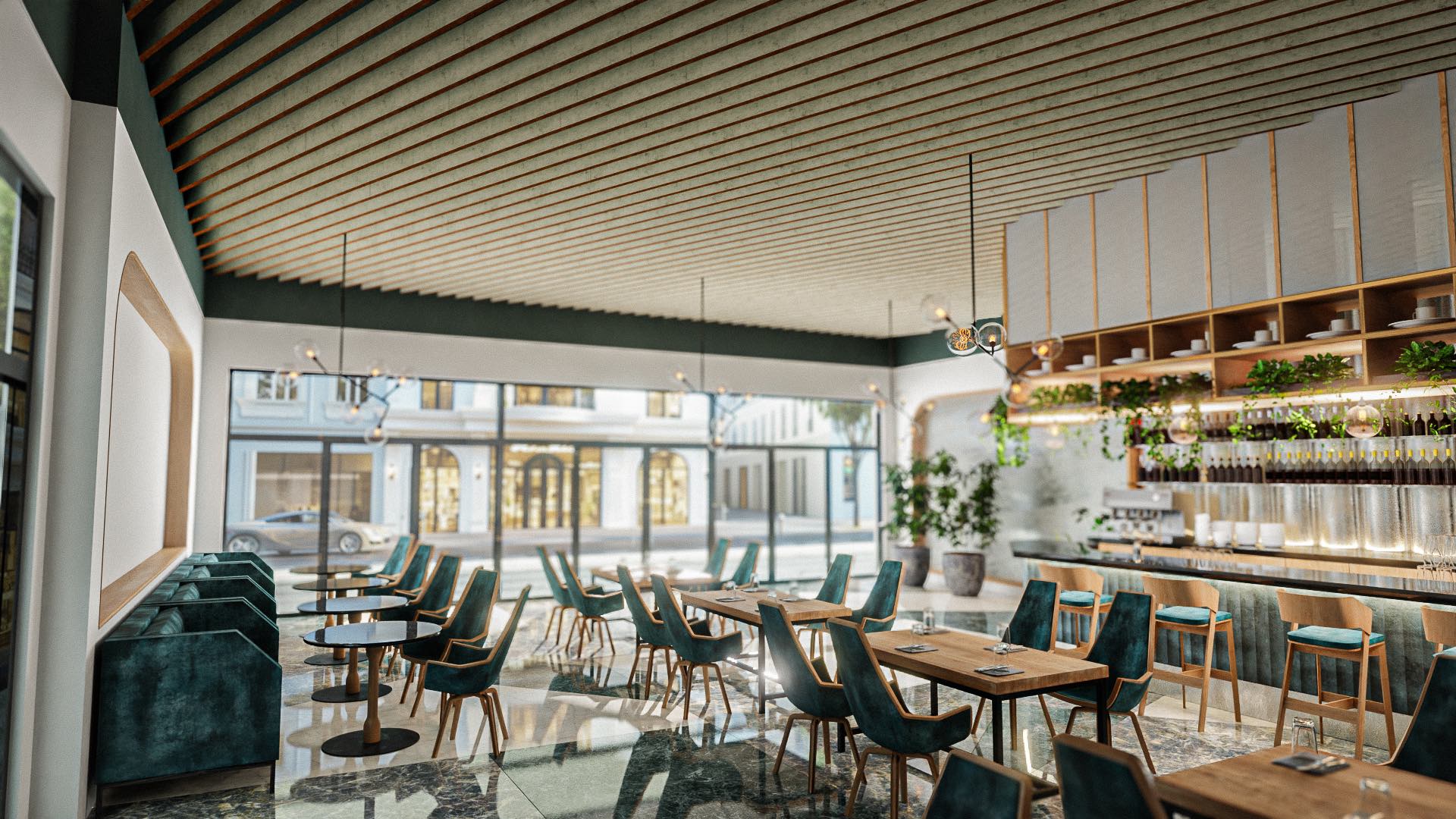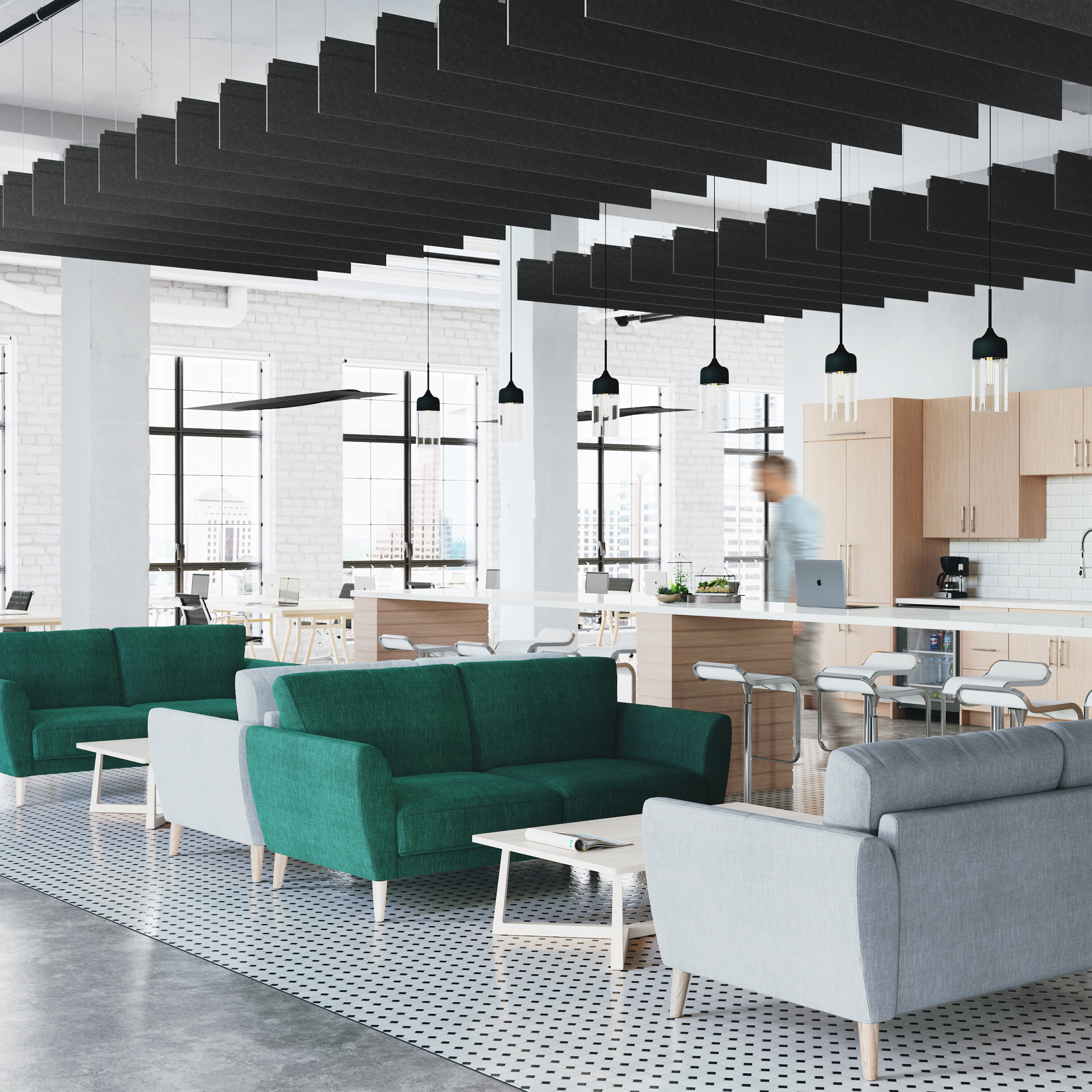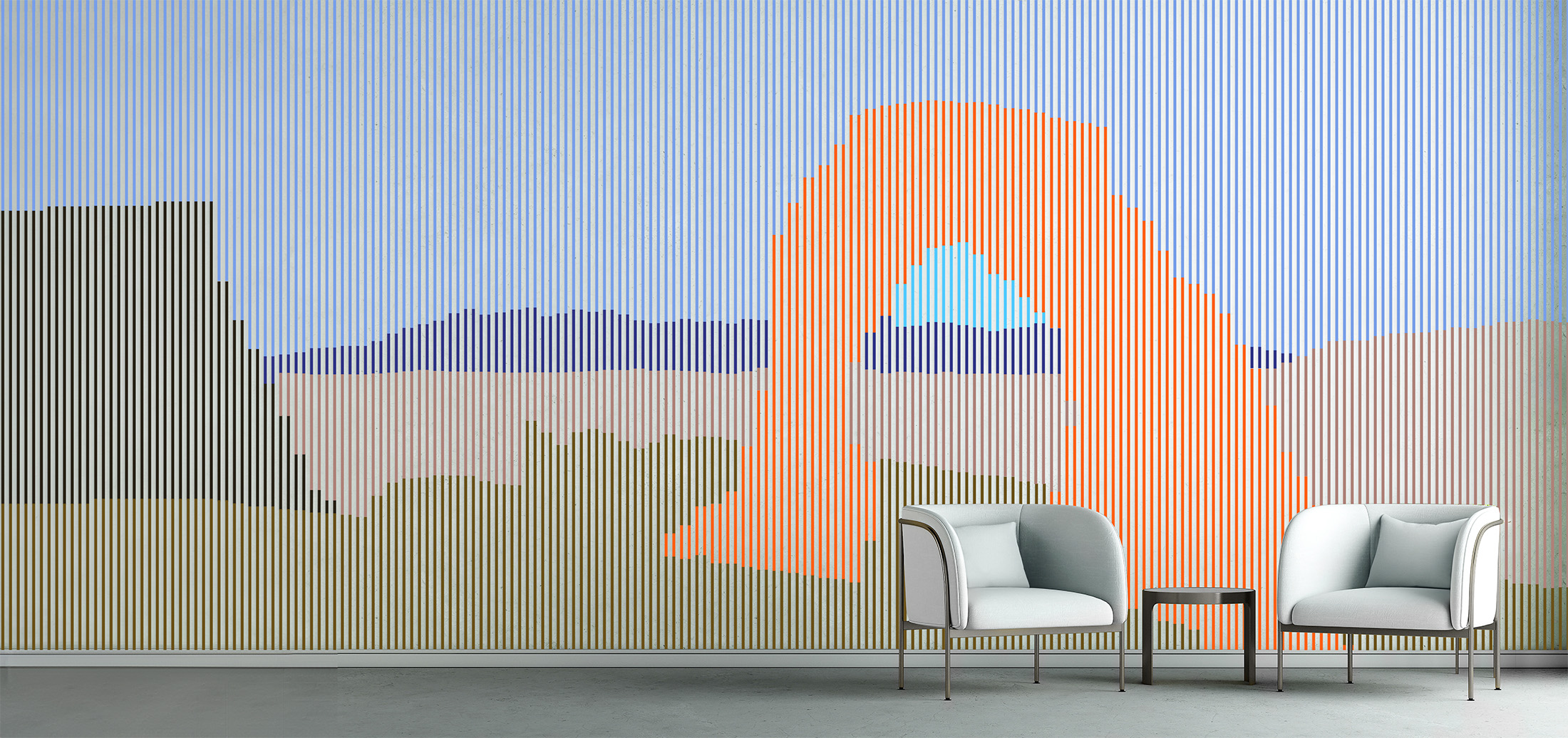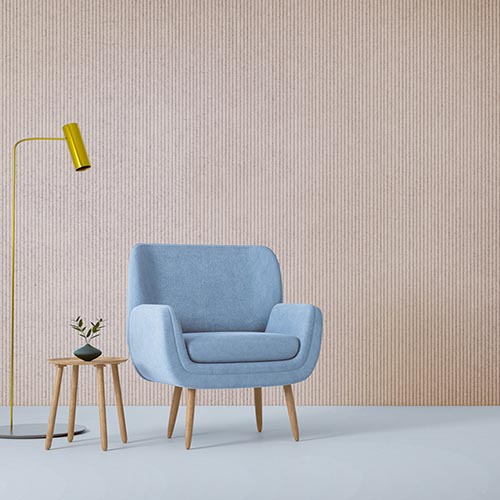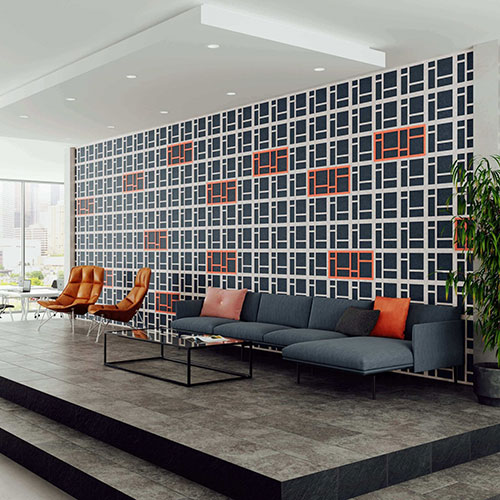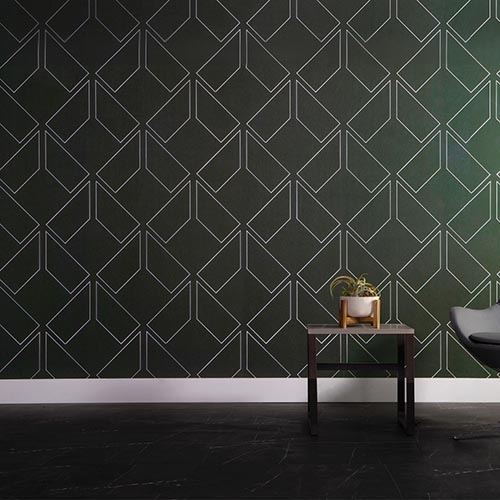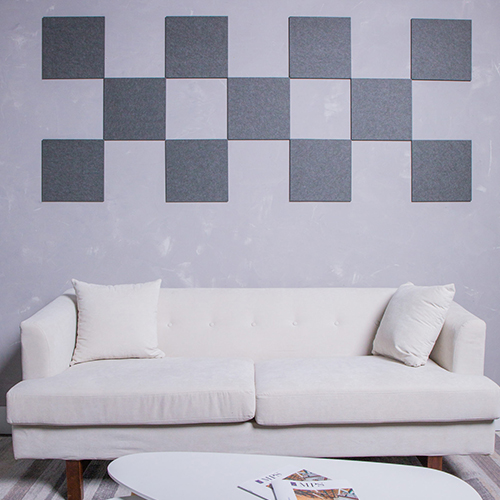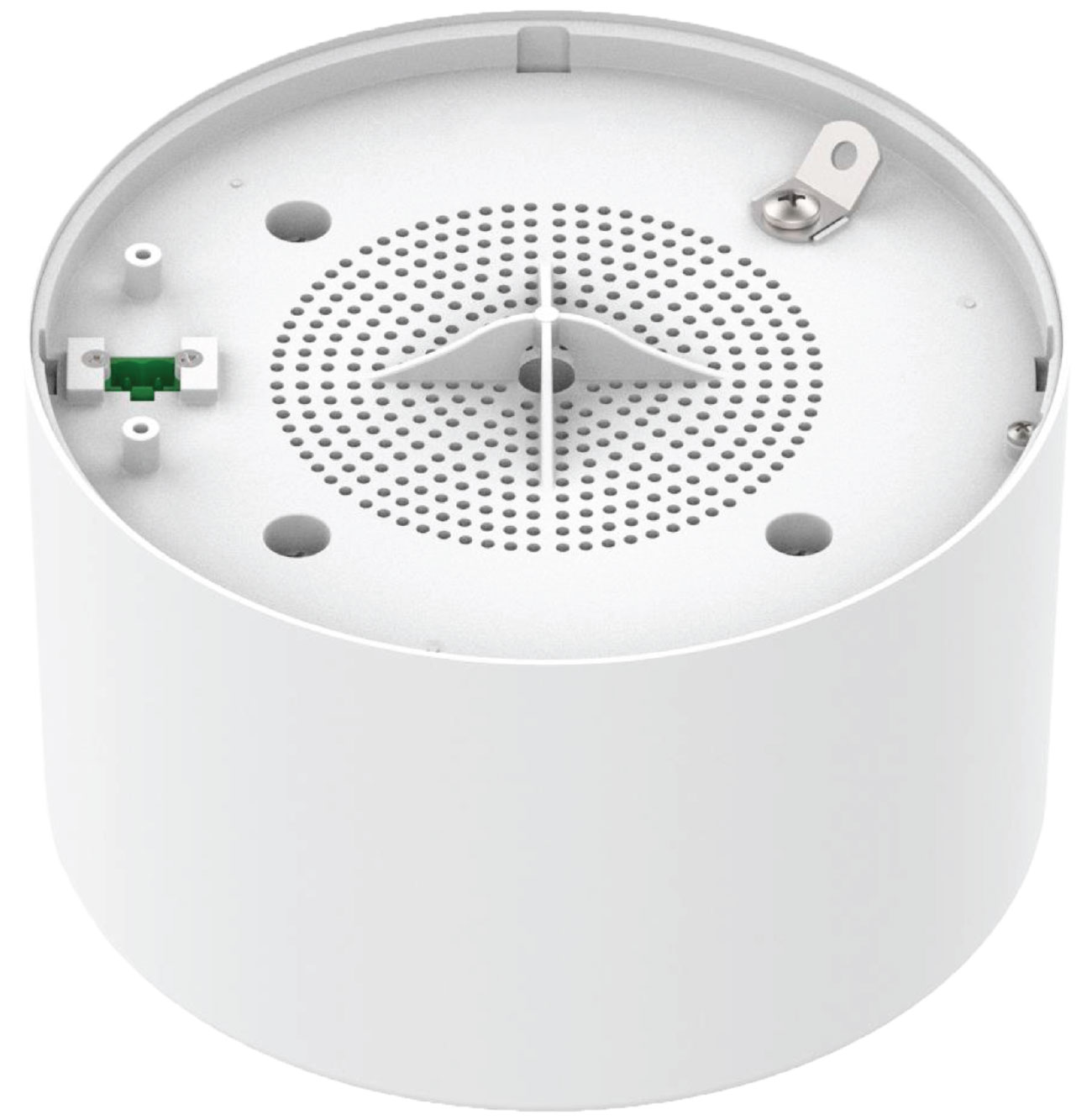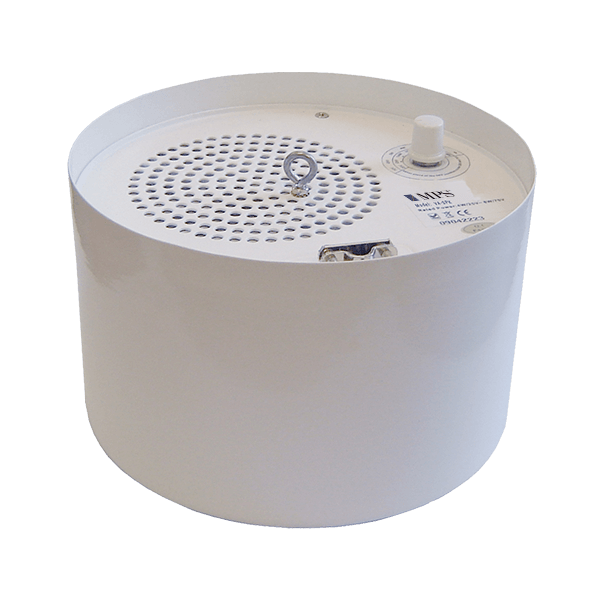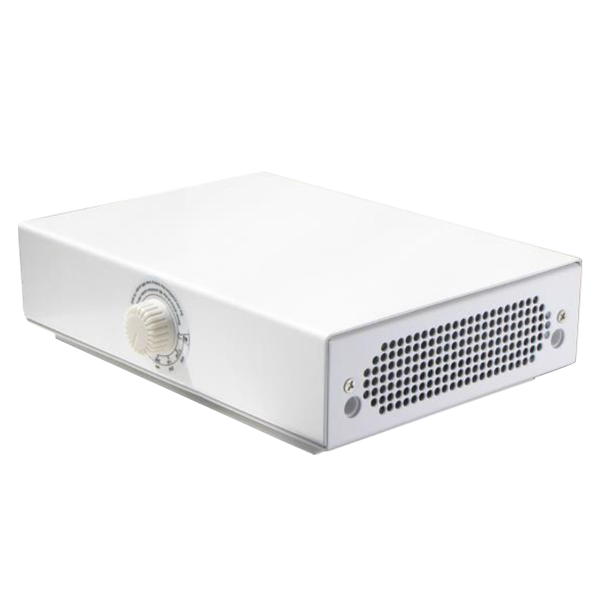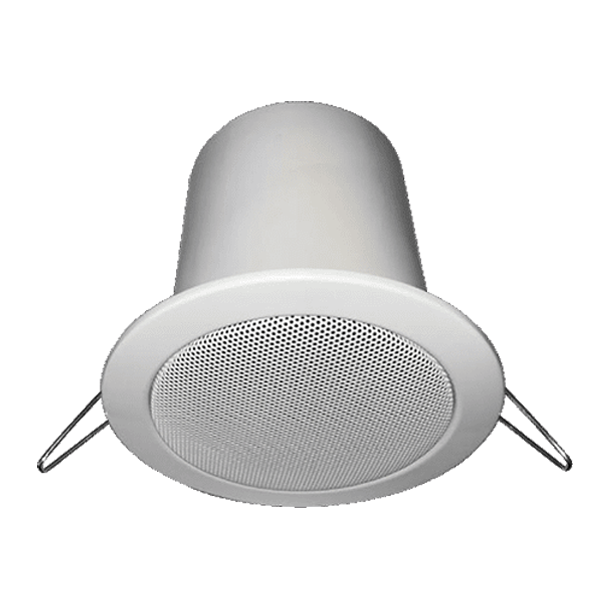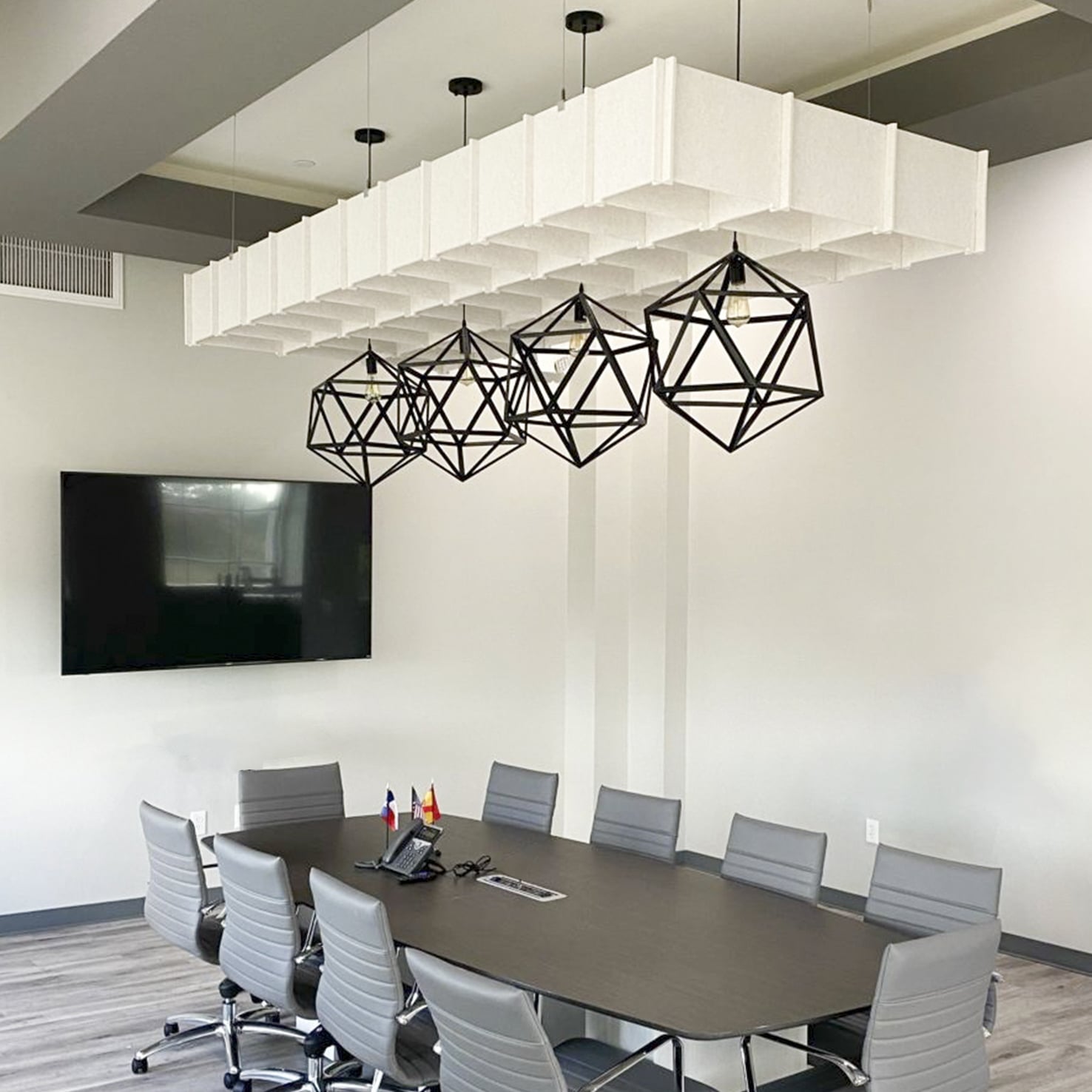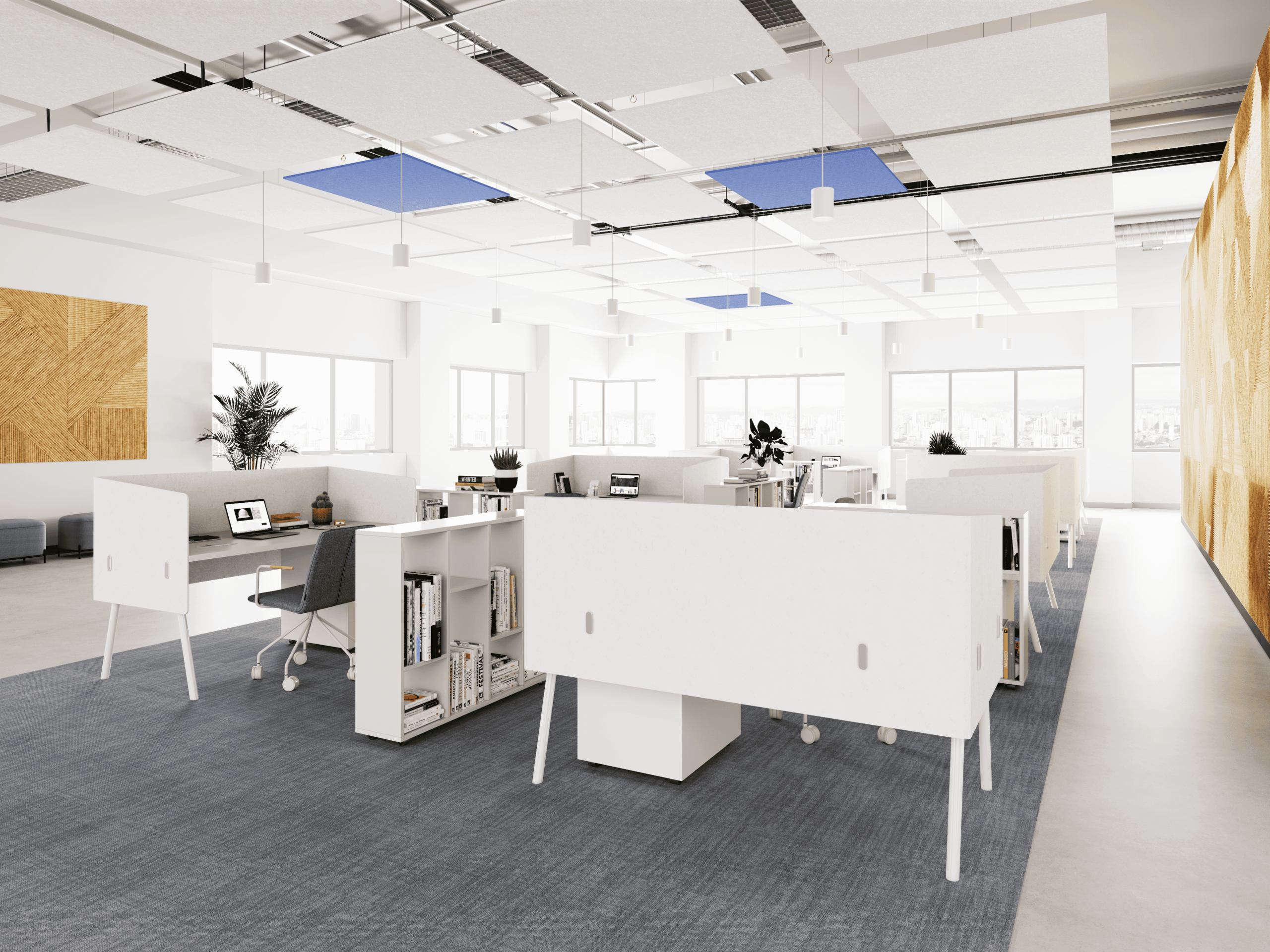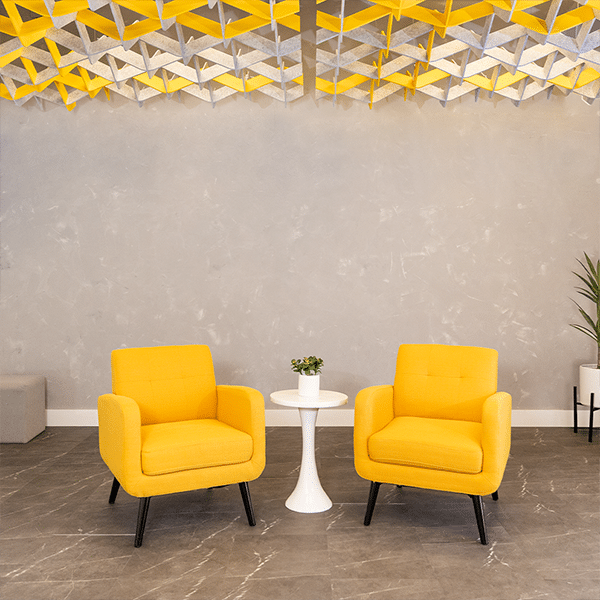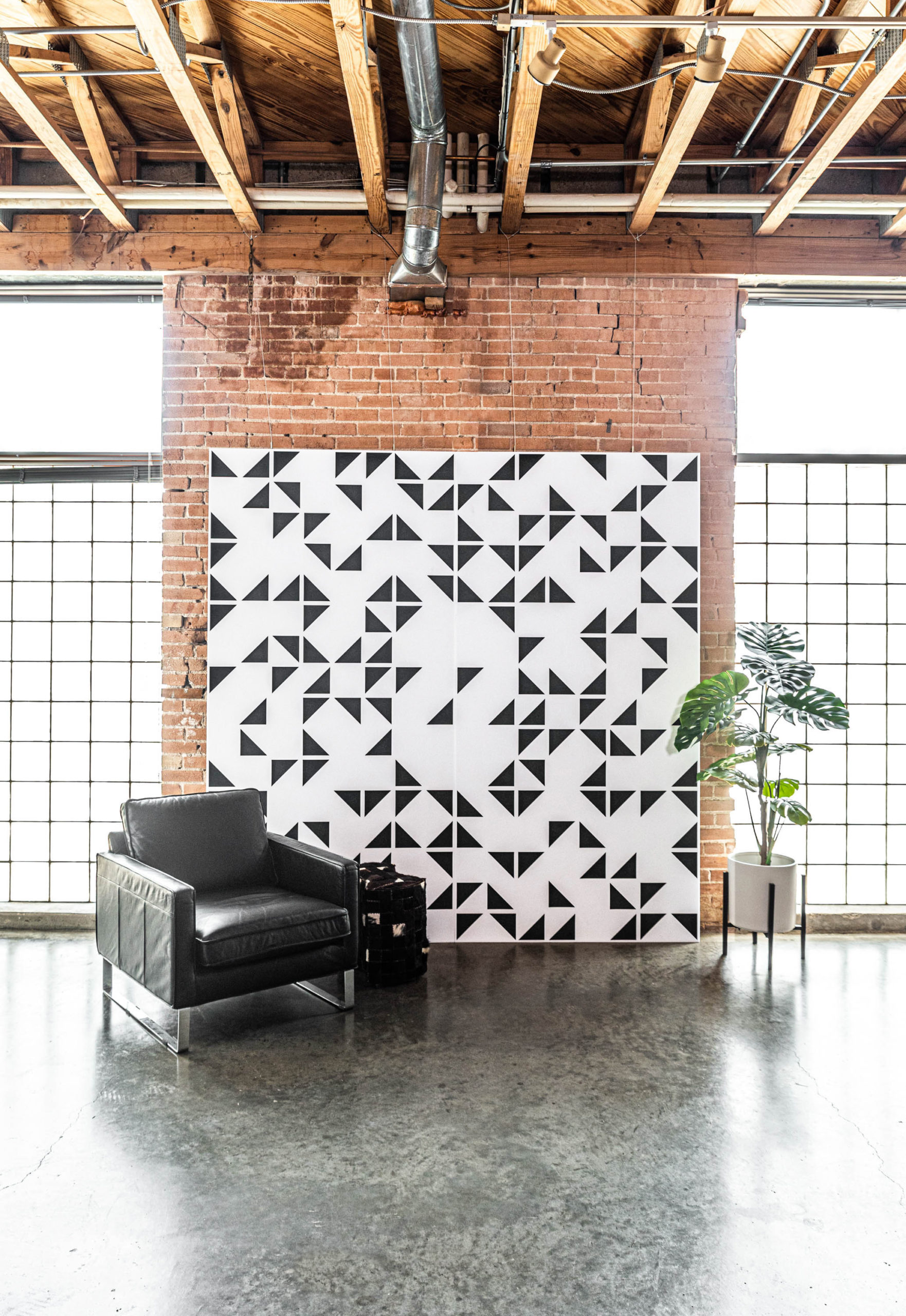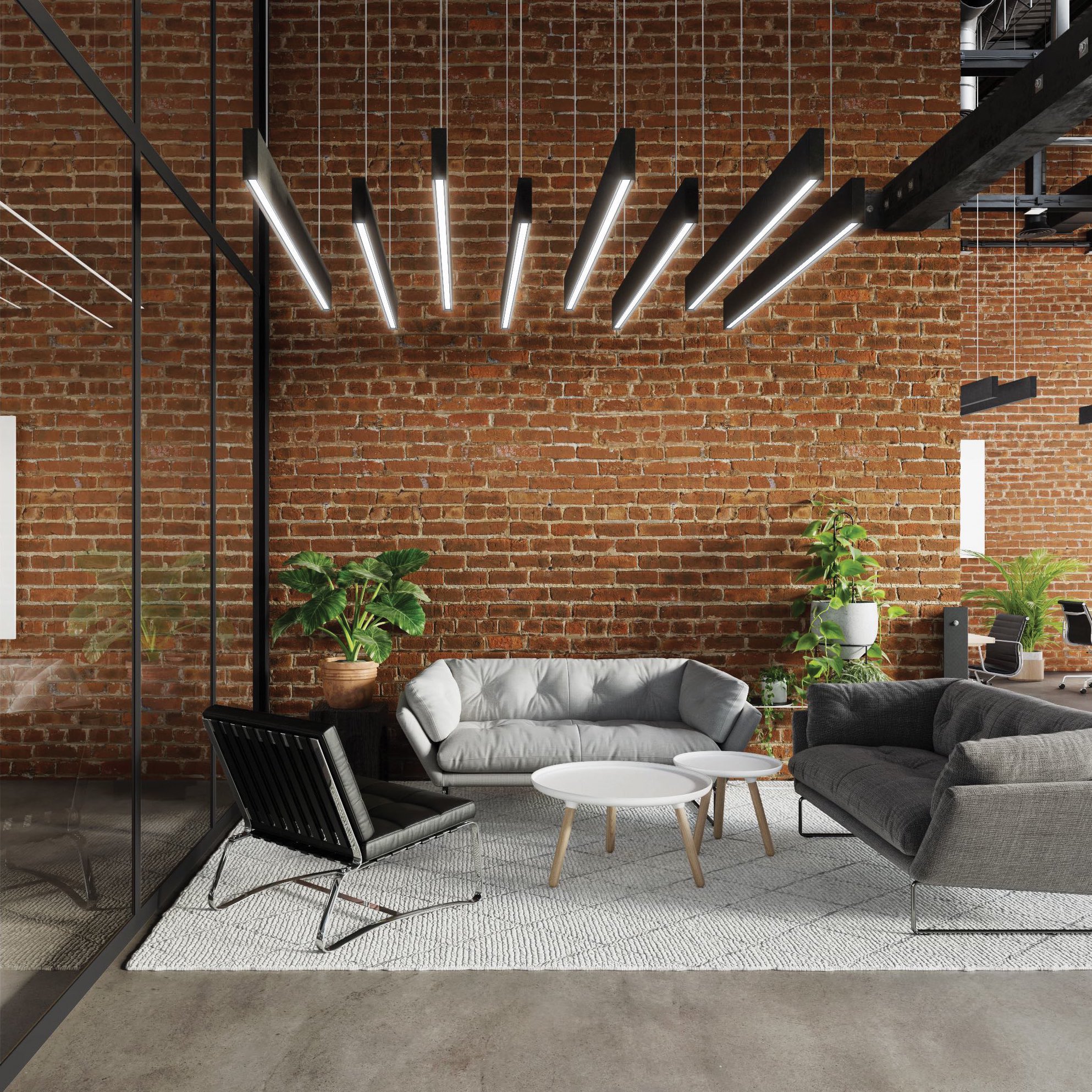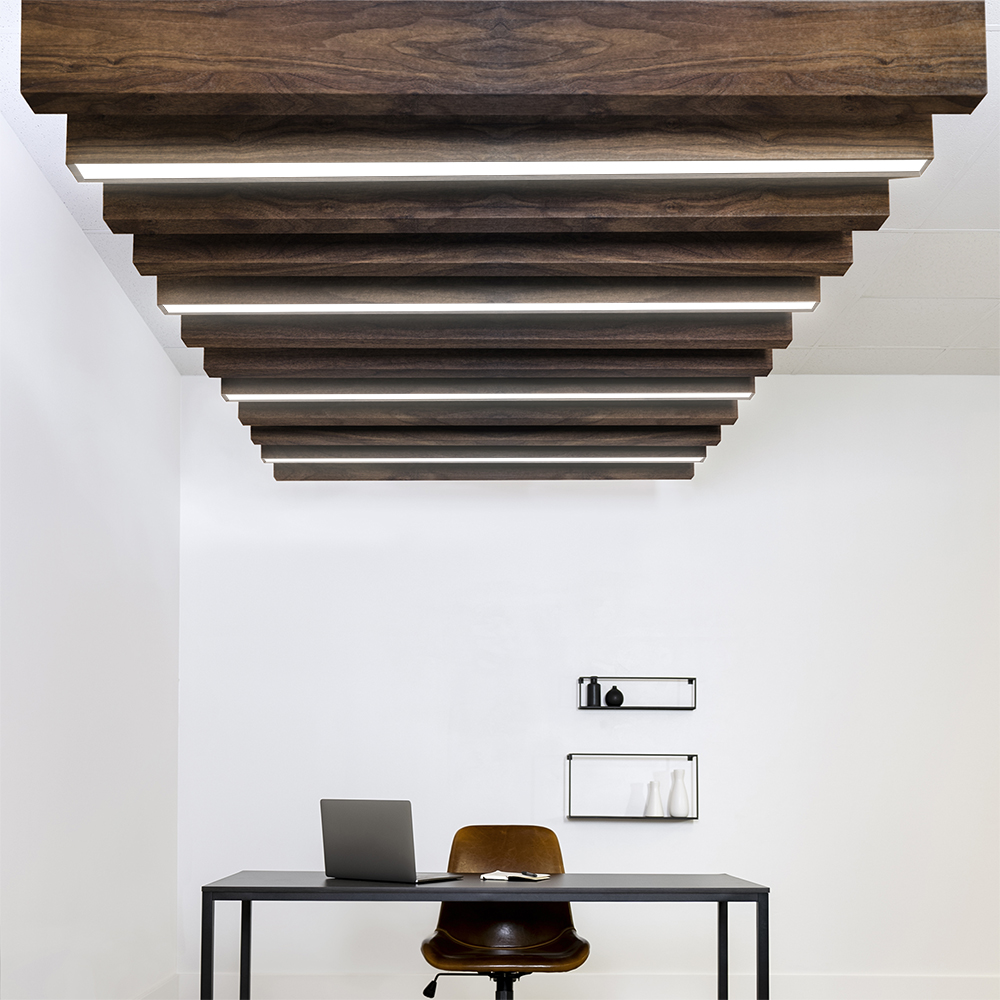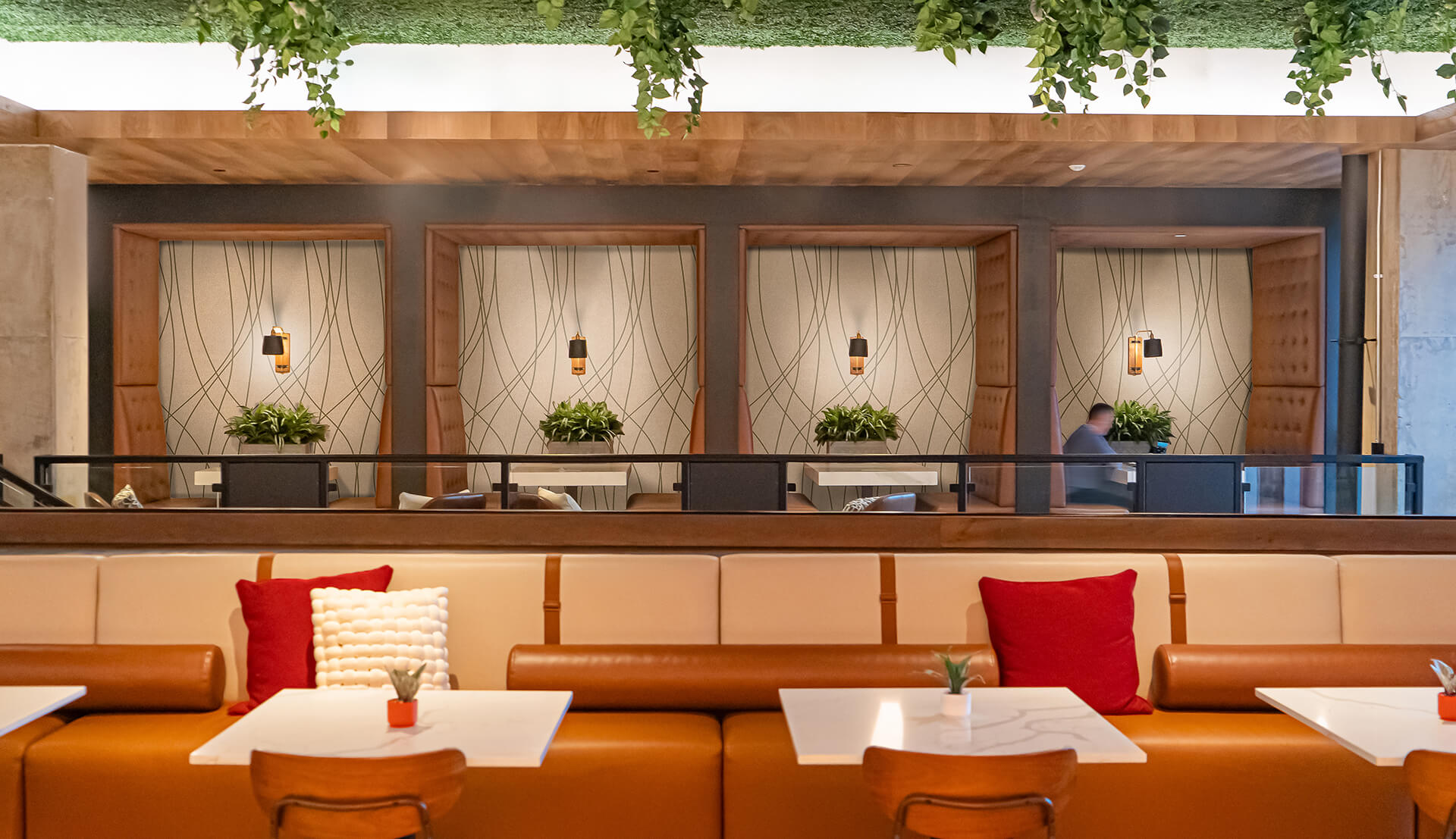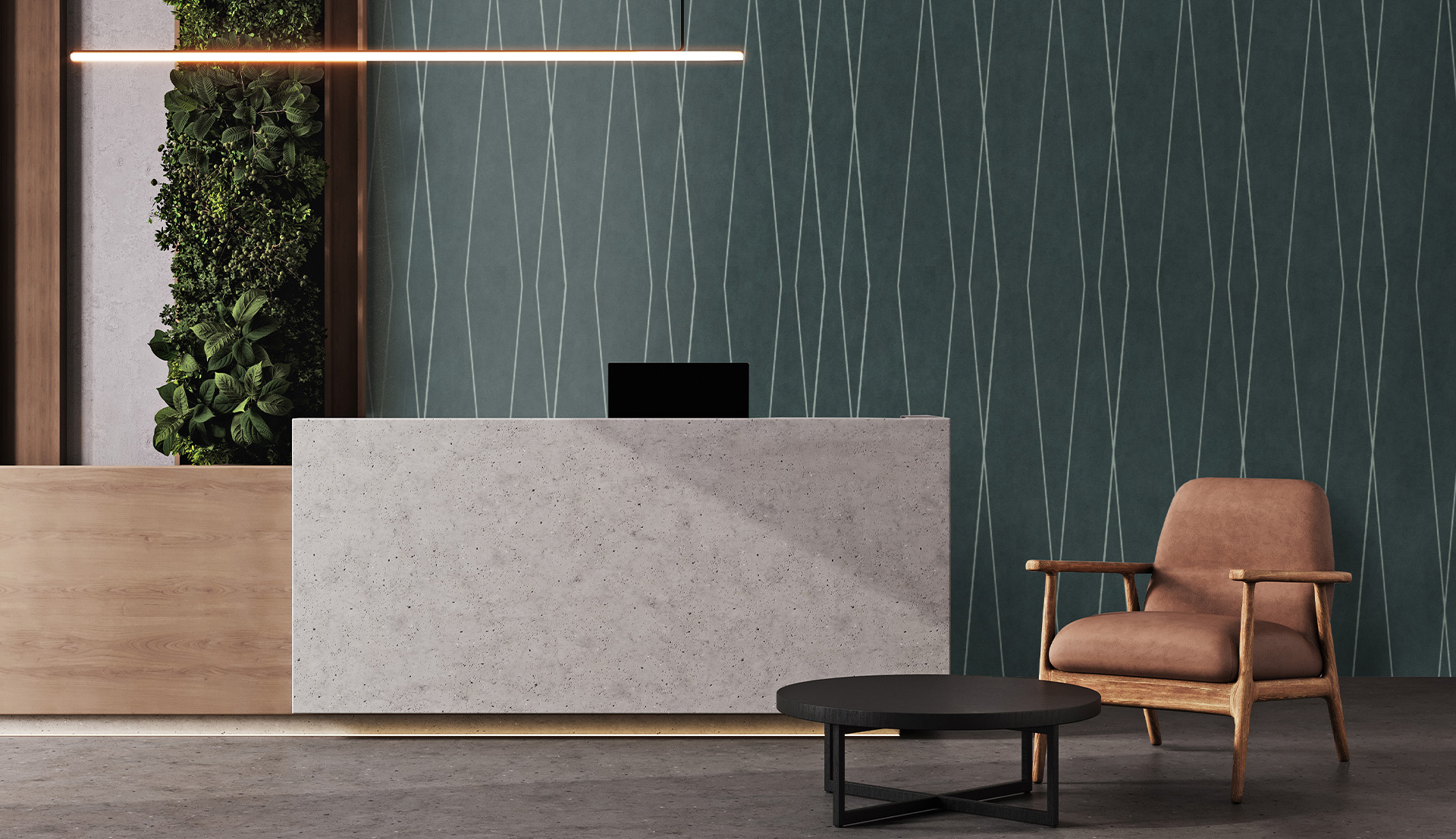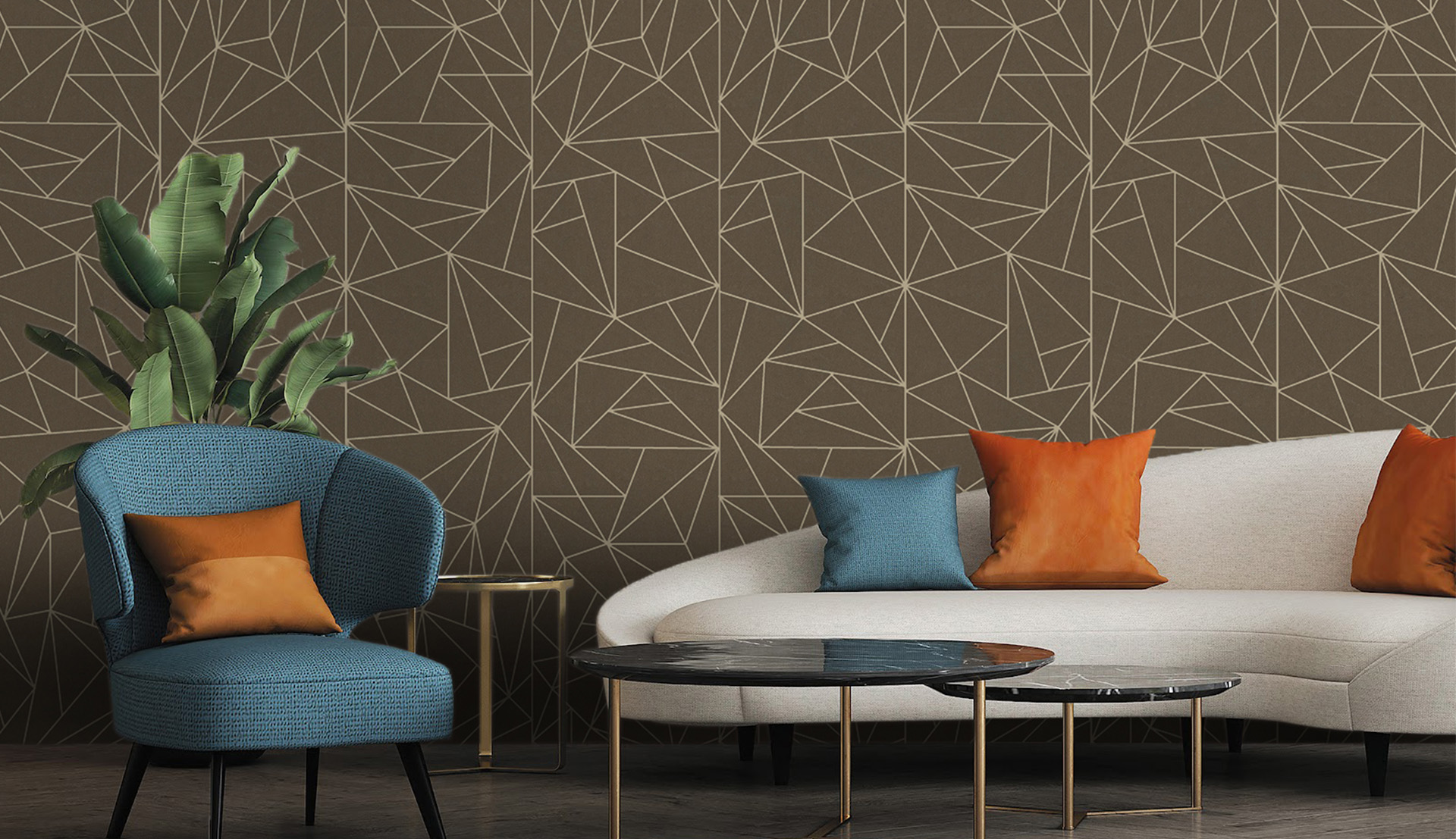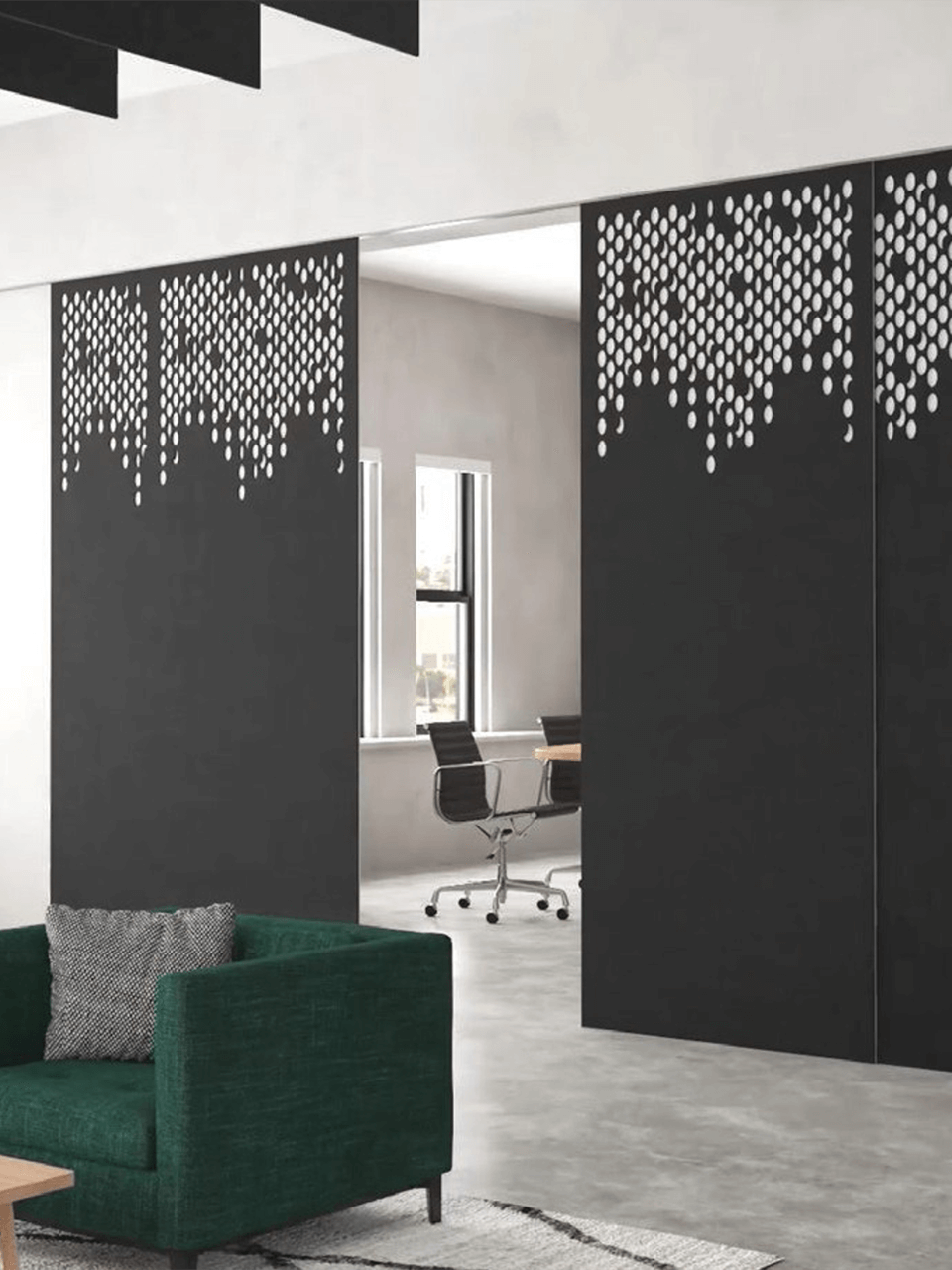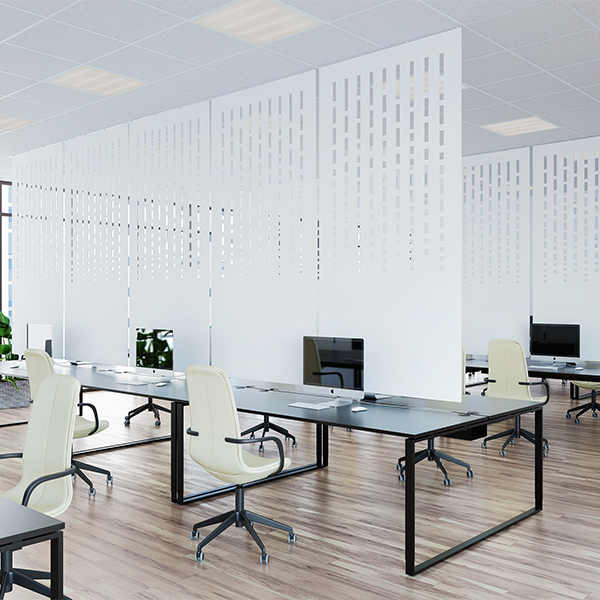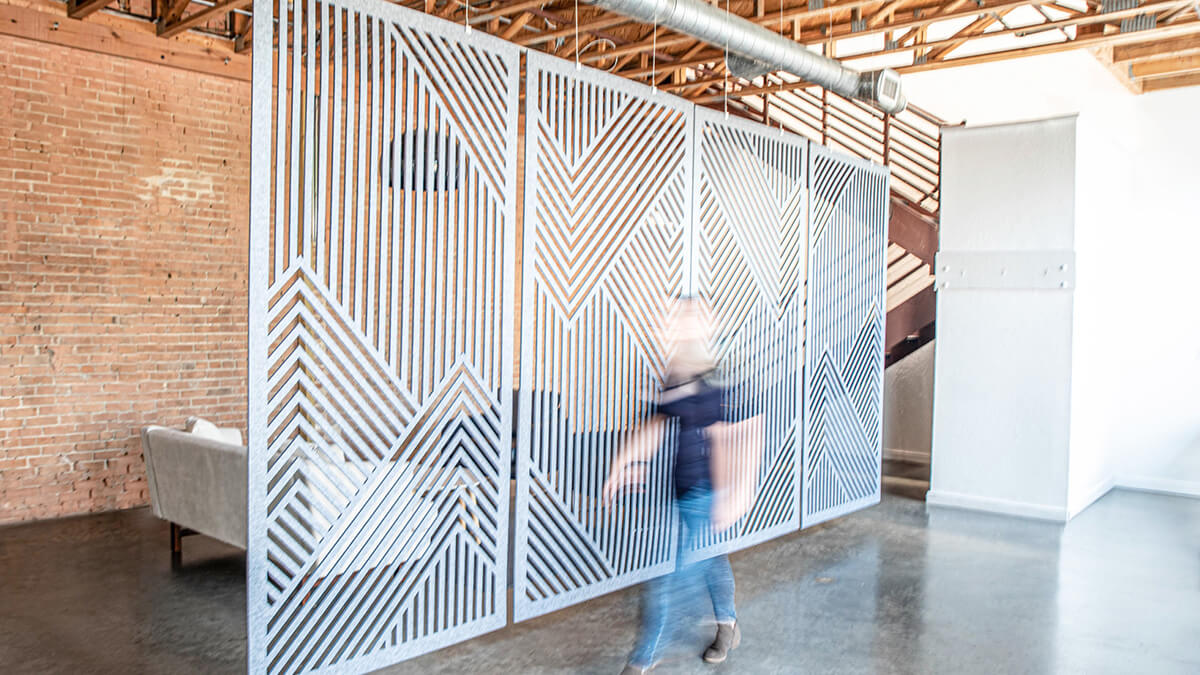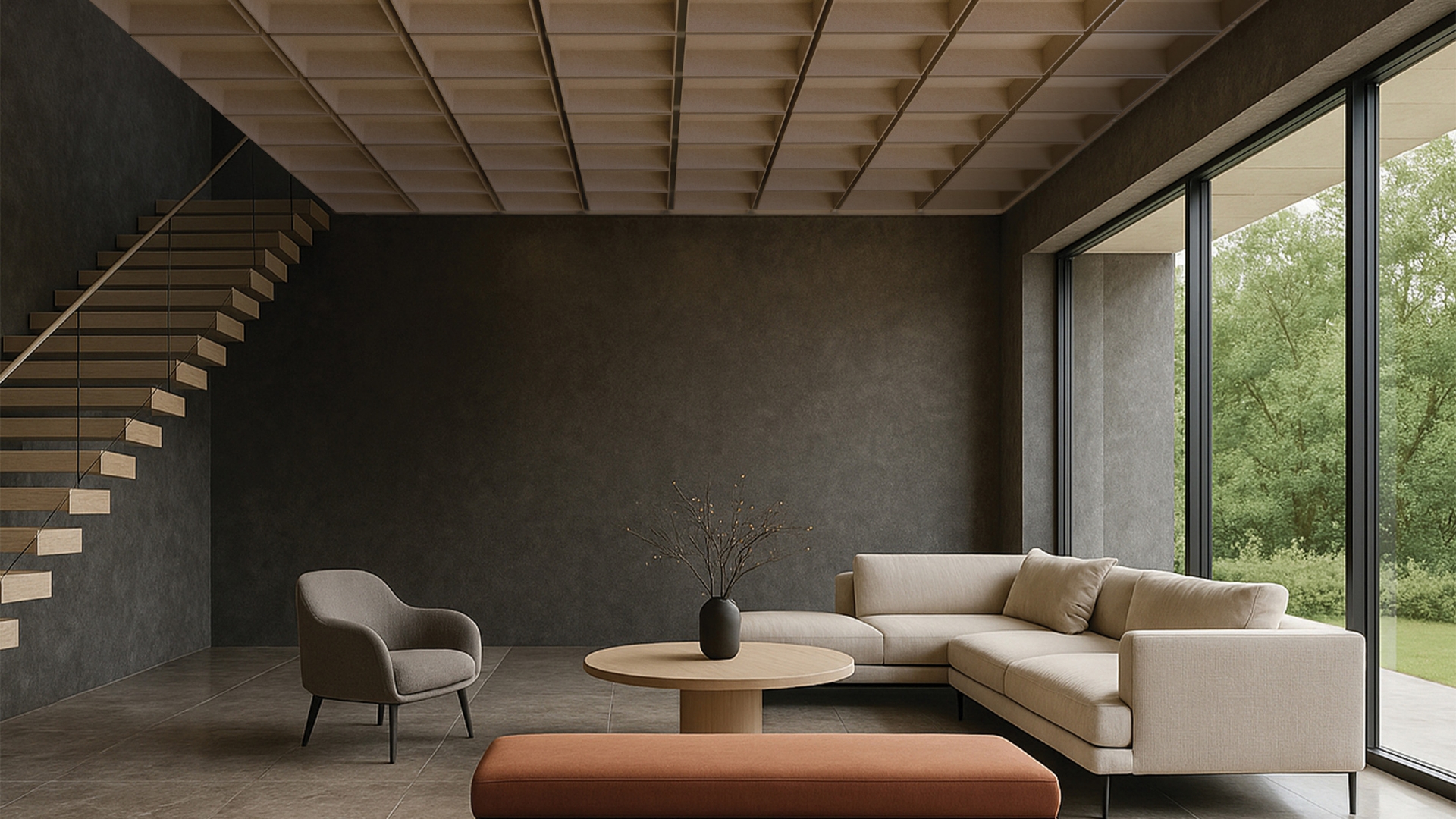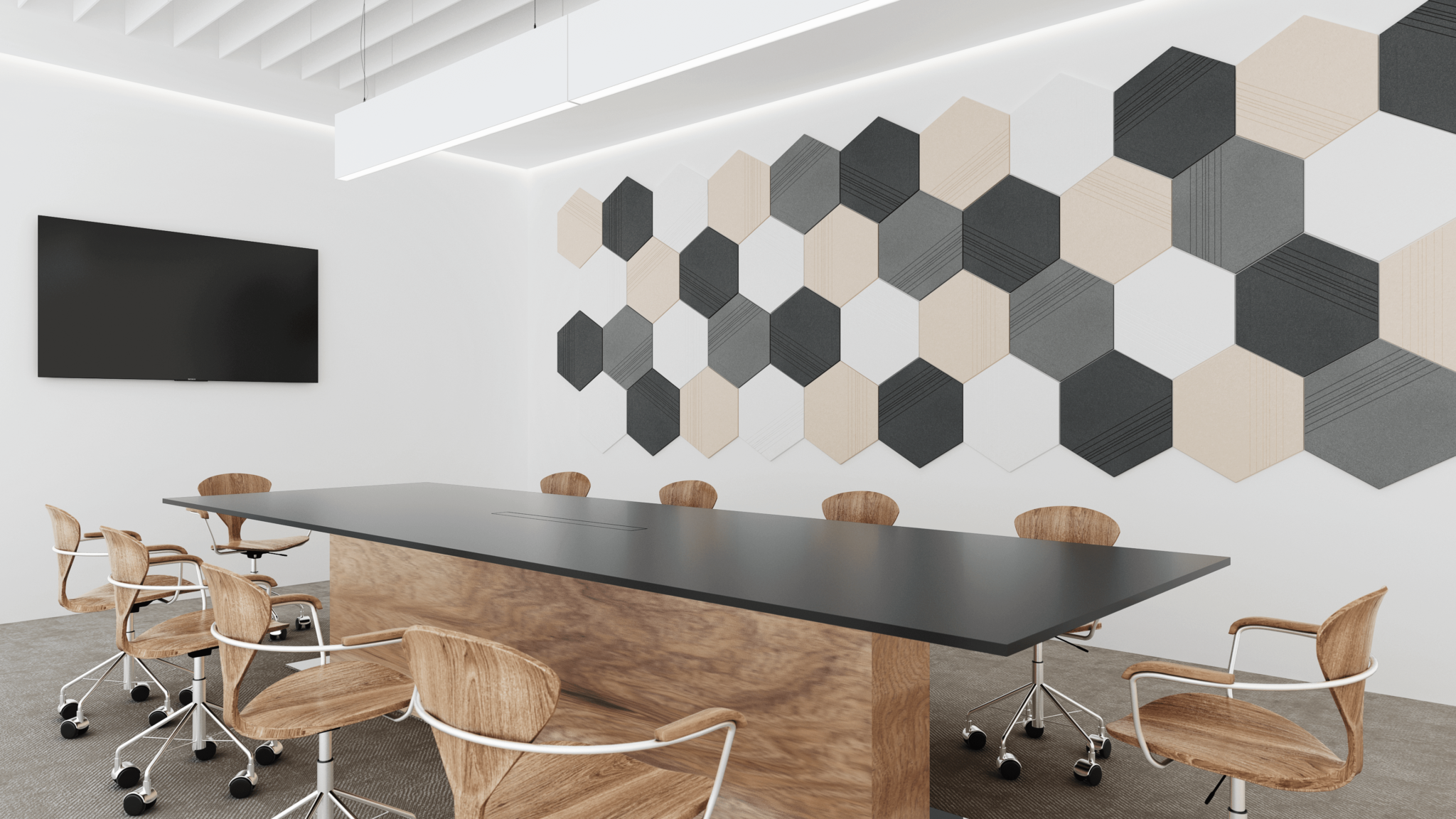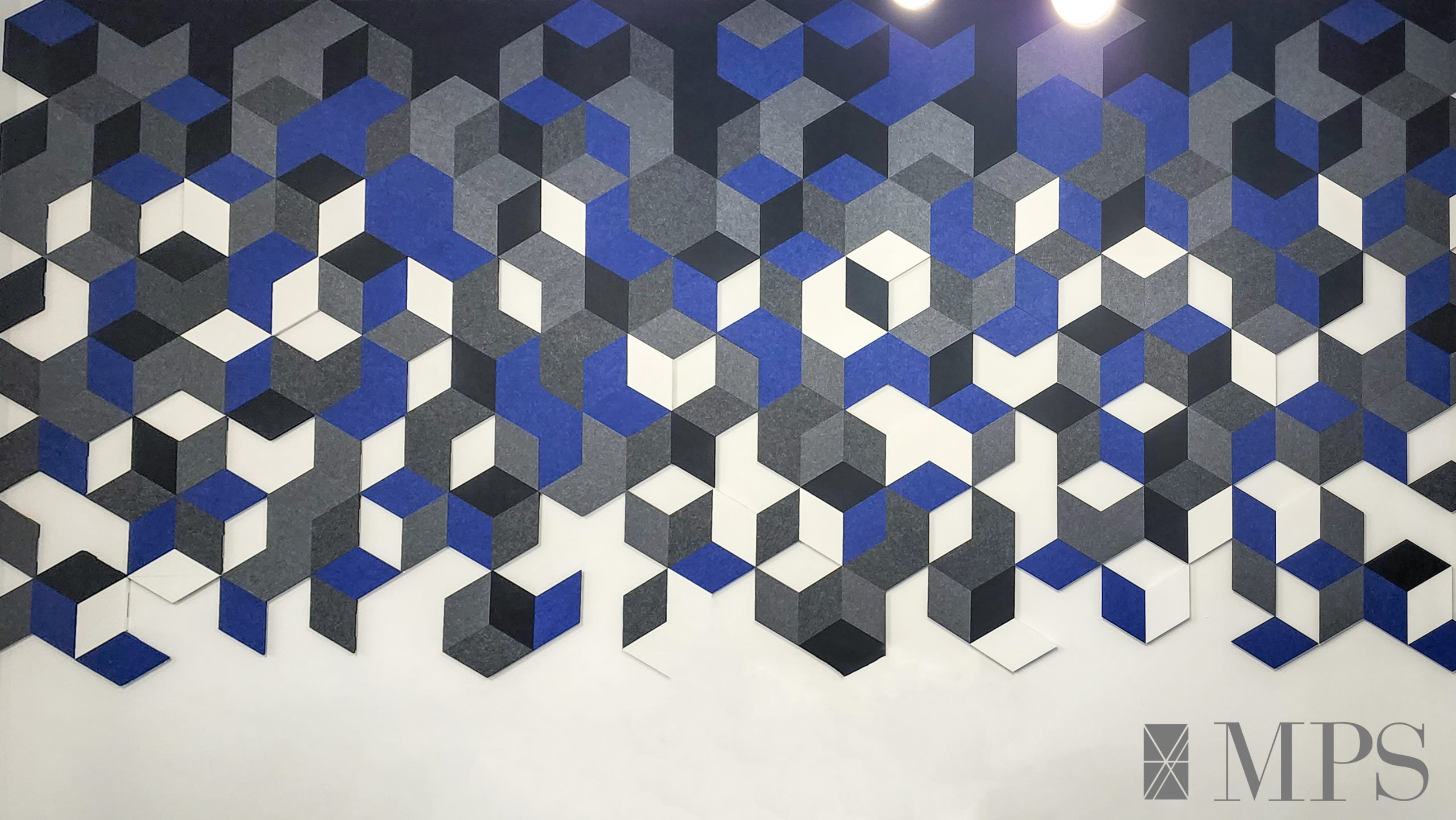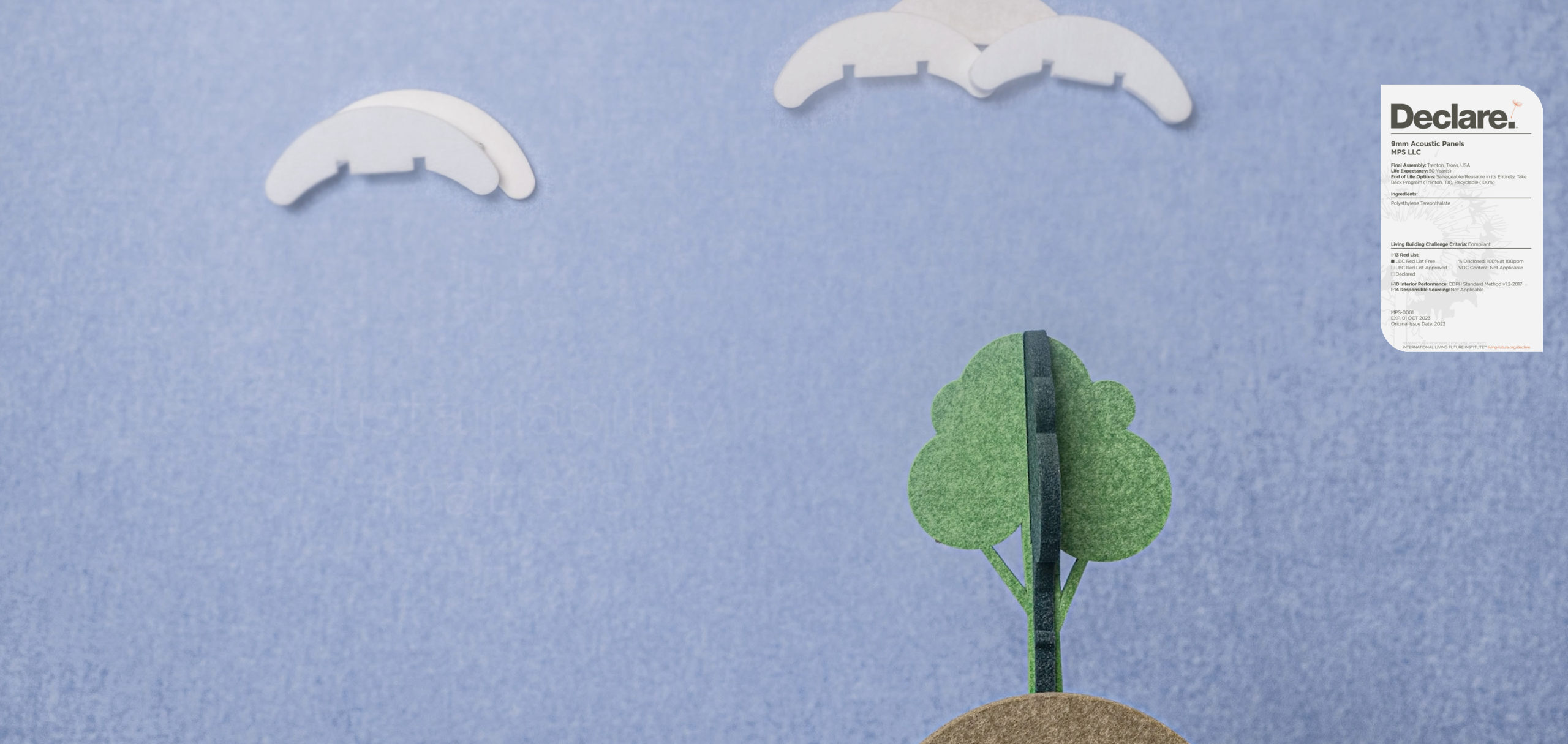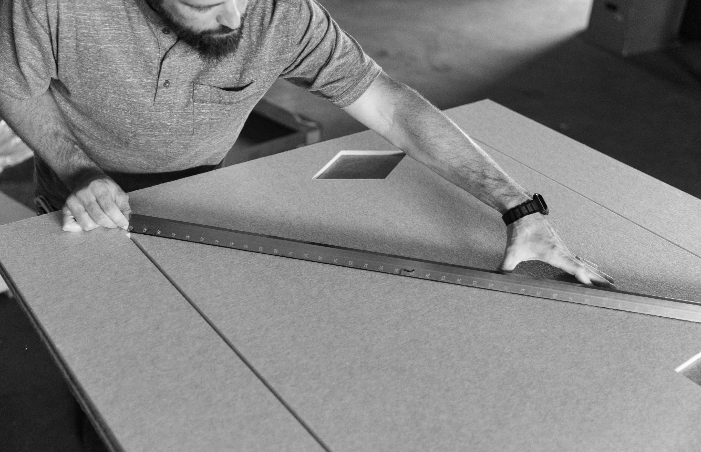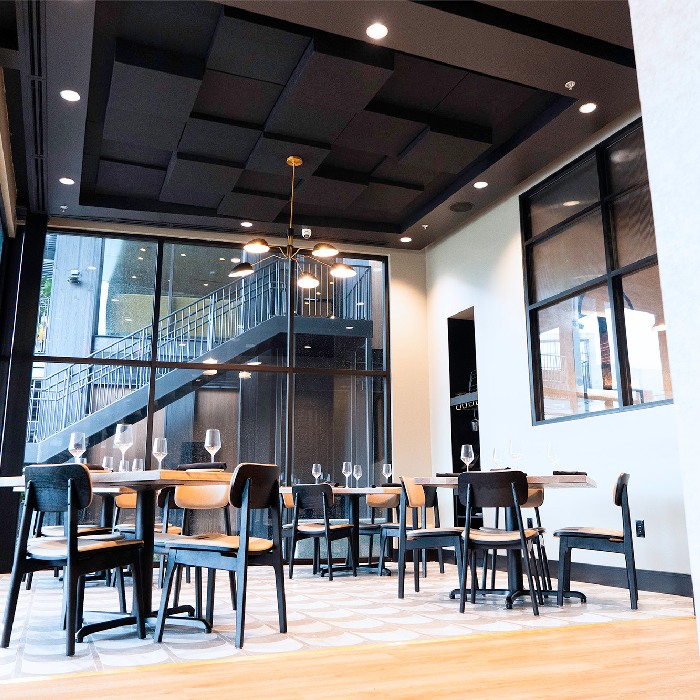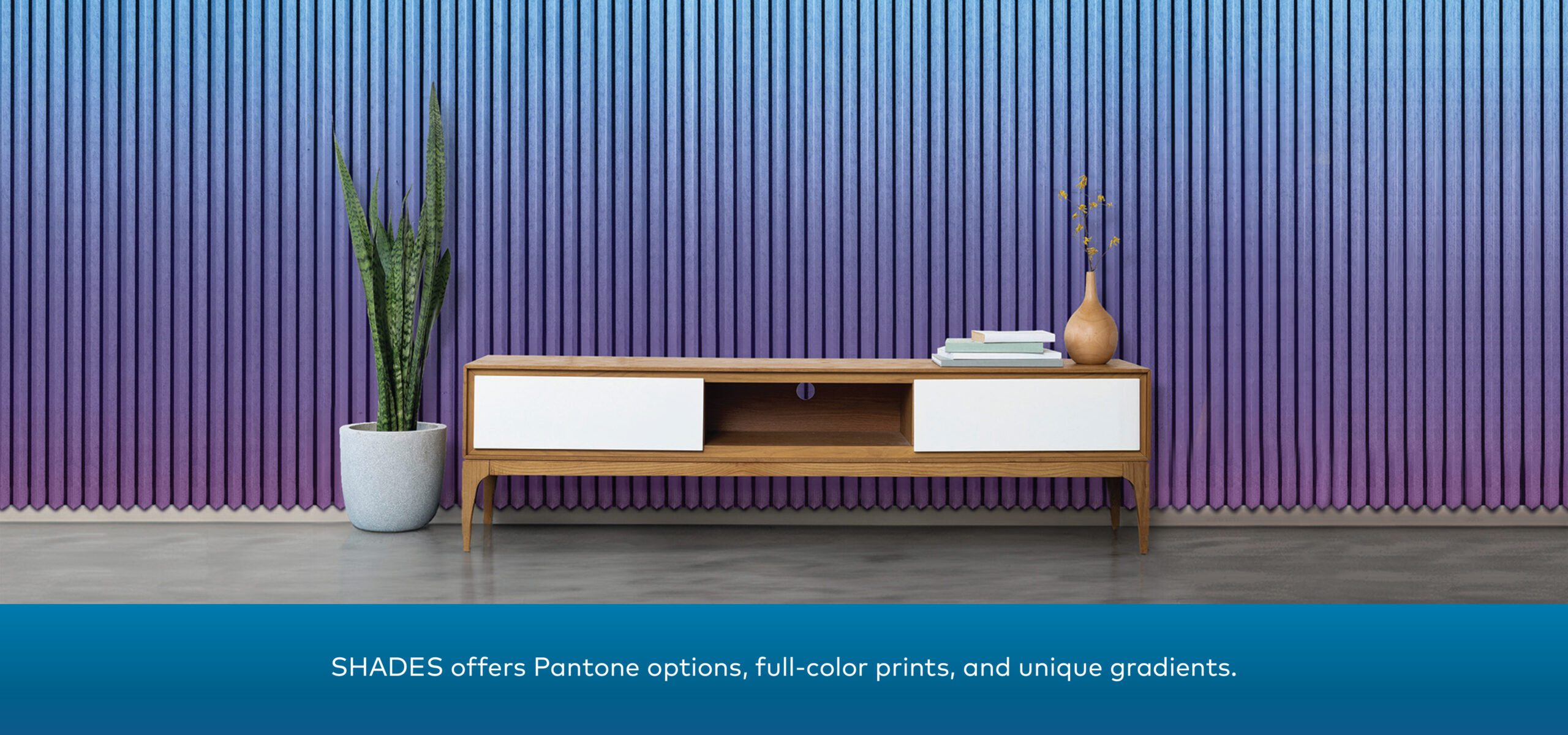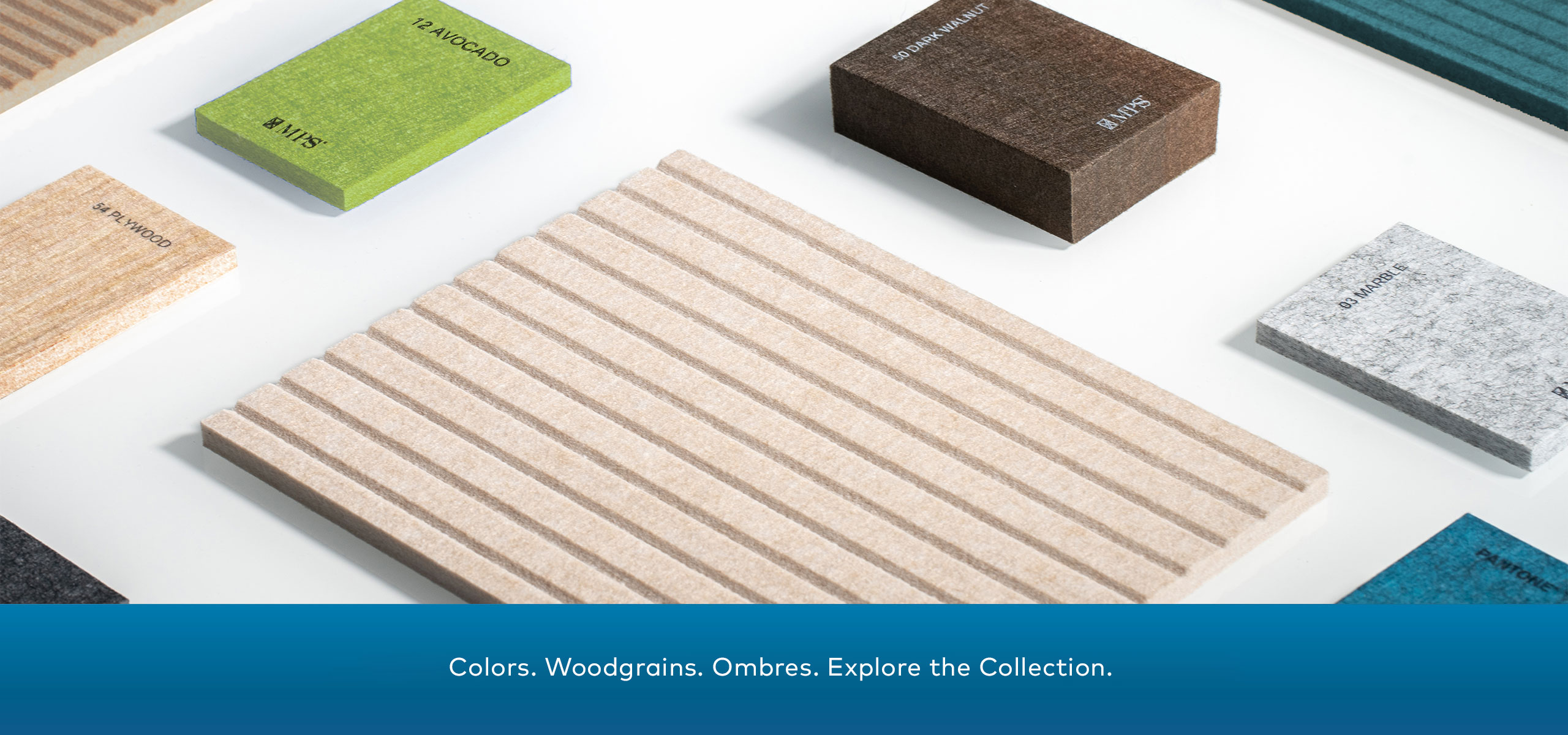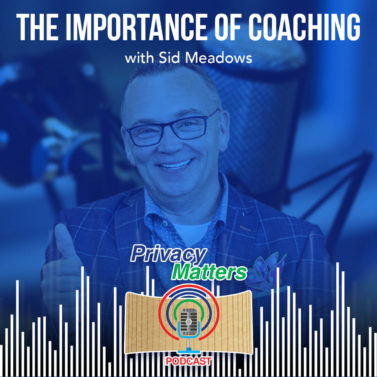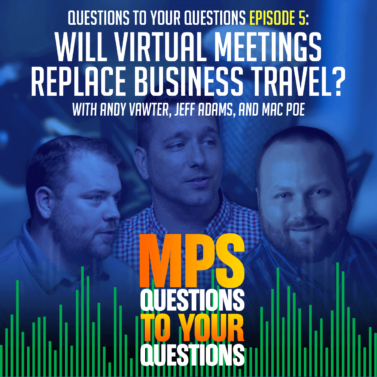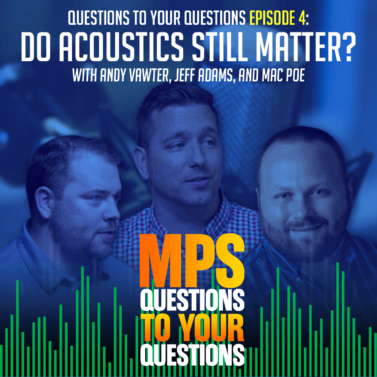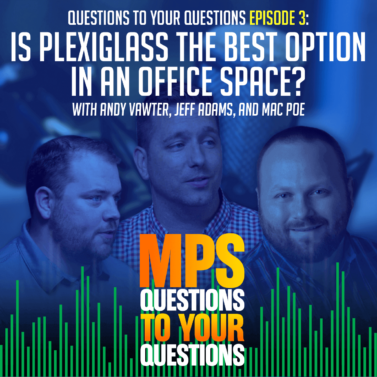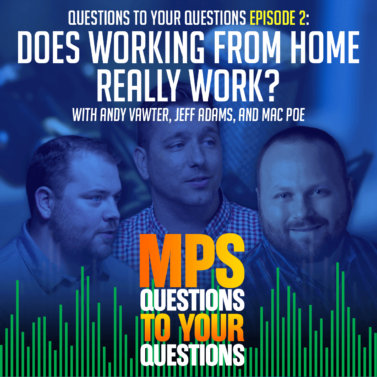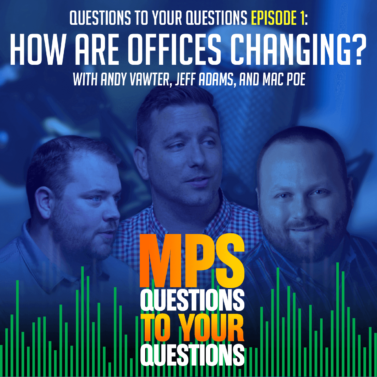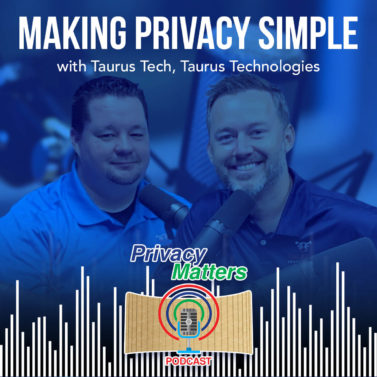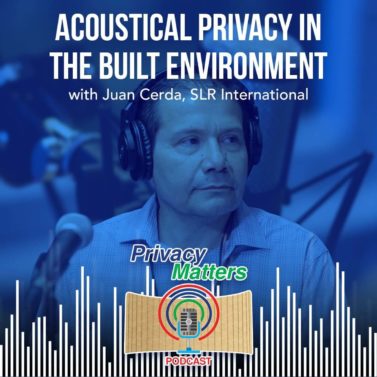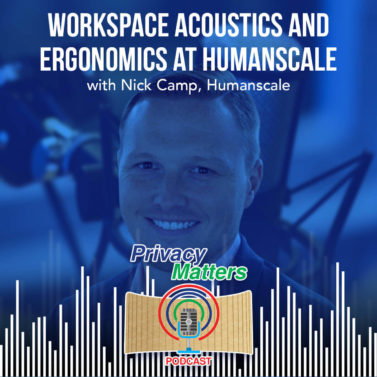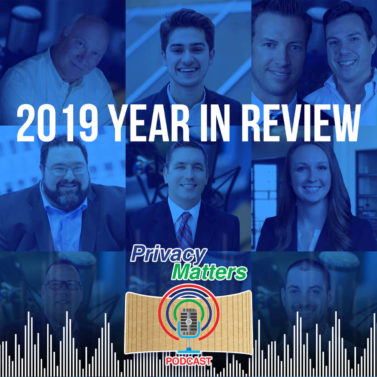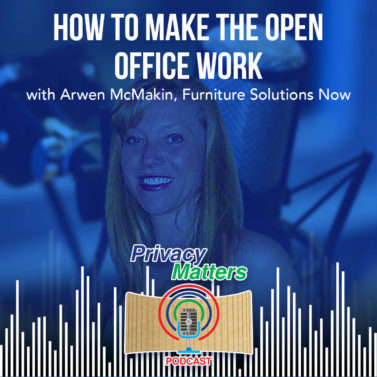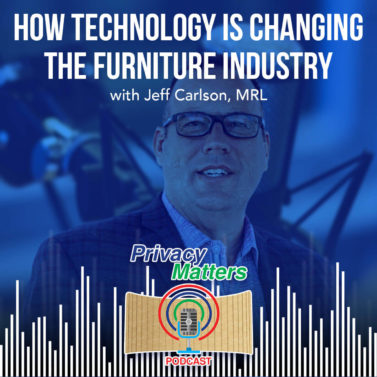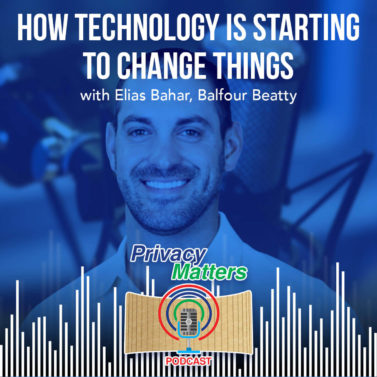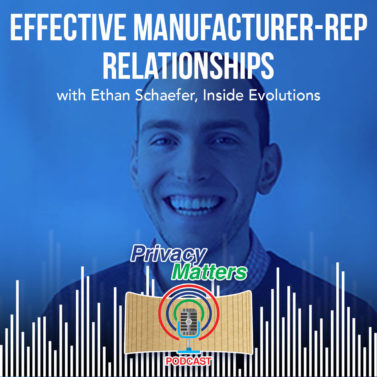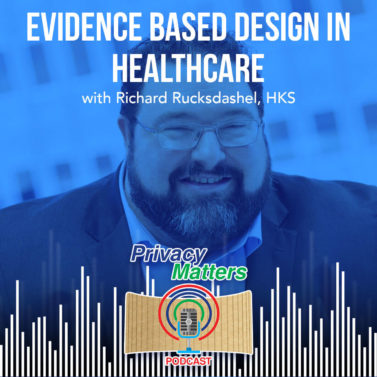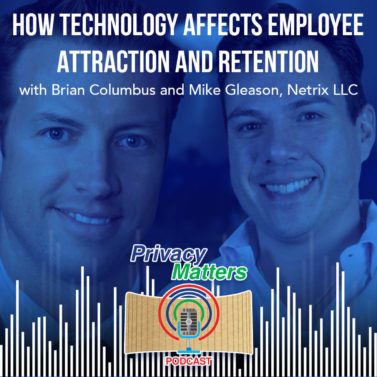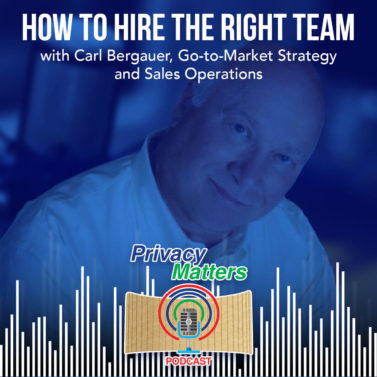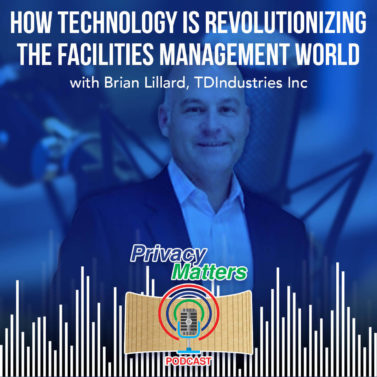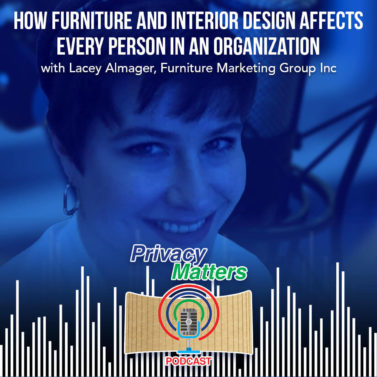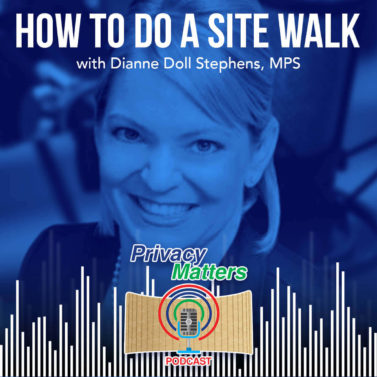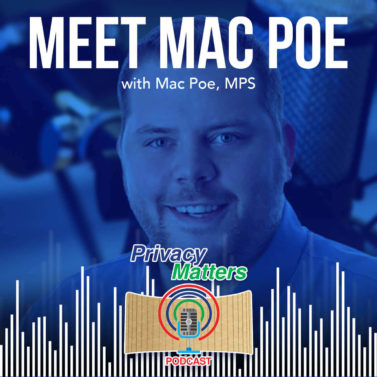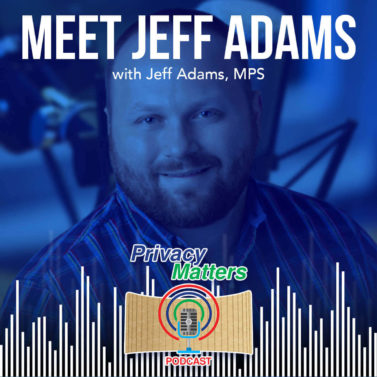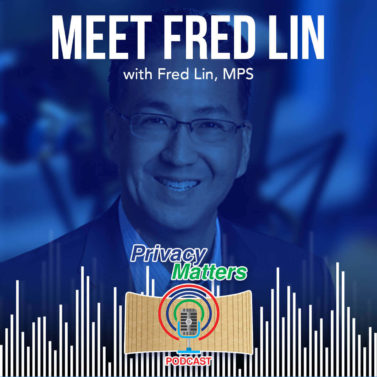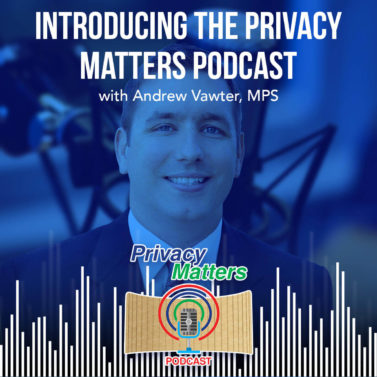Episode 15: Metrocon 2019: The Design Behind Privacy
METROCON 2019 was a fun event for MPS as we exhibited in a design vignette with other companies in partnership with the design firm Smith Group, we sponsored a classroom and met tons of people around the CEU classrooms and delivered a CEU for designers and architects. The event brings in designers and architects from around Texas who are looking for exposure to different manufacturers as well as earning continuing education units. Andy Vawter delivered our AIA course on privacy in office design for the event. He also sat down with Daniel Litwin of Market Scale to discuss designing for privacy in modern offices on the Market Scale B2B Podcast.
The interview was all about how office space is changing to more open collaborative space and how MPS is working to educate everyone involved about the issues of acoustics and privacy. Andy and Daniel discuss how this change is impacting the office space. “Believe it or not” says Andy, “phone booths are coming back.” Businesses are trying to find a way to save costs and open up the space, but they know they will have issues with privacy. “I think it boils down to cost. How do we get more people in the space?” Andy points out that education is the most important part. People come to the designers looking for a space plan, so if that designer understands how acoustics works, they can be a very valuable resource.
Andy went on to talk about lessons learned on various projects and how to focus on the customers’ needs. “I think I’ve learned that just caring about the customers’ experience is really the only thing that matters.” This focus on the customer allows MPS to determine the correct solution for the client. Even if the original build of the space created some very difficult problems, helping improve the acoustics is always the goal.
Daniel: [00:00]
From the Dallas Market Hall. This is Market Scale at MetroCon.
Daniel: [00:10]
Hello everyone. Welcome to the podcast. I’m your host Daniel Litwin, the voice of B2B and today we are at MetroCon 2019 in Dallas, Texas, which is a conference for interior designers, architects, facility managers, and more looking to network and learn in the built environment. And on this episode we’re looking at the loss of privacy in the workplace and why some say we need to bring it back. How should architects designed with privacy in mind and to what extent? We’re looking to answer those questions and to give his insight. I’d like to welcome Andy Vawter, Vice President of Business Development for MPS LLC. Andy, great to have you on. How are you doing today?
Andy: [00:47]
I’m doing well. Thanks for having me on the show.
Daniel: [00:48]
Yeah, it’s a pleasure. I’m looking forward to breaking this down so you know, I think everyone can just literally turn around in their seats and look at what the workplace looks like today and realize that things have evolved a ton in the last several years. I mean that the traditional cubicle style office plan has been transformed into an open floor, which has become collaborative spaces. And then even further, I’ve been pushed to coworking spaces. So you know, the workplace doesn’t look like it did in office space, which we’ve got a shout out that movie. Great movie.
Daniel: [01:17]
What kind of effect has this change in the workplace had on privacy in the workplace?
Andy: [01:23]
Well, I mean the way you described it, I think everybody could understand it. That’s basically going to kill privacy. And so things that we’re seeing come back as a result of that are, believe it or not, phone booths. So that’s a new trend is a small little phone booth put in the office. So if I need to call my doctor or call my wife or something like that I can get up and walk into one of those close the door and have a call.
Andy: [01:45]
(Daniel: Do you have to use quarters?) No. (Daniel: No, no, no quarters.) Although they’re pretty expensive so they probably should have a little bit of an offering and there’s, you know, help pay for it. (Daniel: Free the quarters back me?)
Daniel: [01:57]
Well that, yeah, I mean it totally makes sense, right? As the walls came down and collaboration increased, it’s almost like the pendulum swung a little too far in the other direction. (Andy: That’s a good way to describe that.) Are there any other specific design trends that have affected the modern workplace and privacy in the modern workplace?
Andy: [02:16]
I think a lot of that boils down to cost. You know, the walls are expensive. Real estate is expensive, right? So people who may be traditional could fit a hundred employees in a certain amount of square foot. Now we’re trying to do it in a smaller space. And so they’re coming to the architects and designers and saying, you know, we need to maximize the footprint here. How do we get more people in the space? So that’s adding to it and so, you know, you also look at construction techniques. So a lot of people here at this show, you know, sell different materials and things like that that go into builds. The way we’re designing walls if you just asked a general contractor to build you a wall, there’s a bunch of different ways they can do it, right? There’s the right way from an acoustic standpoint to give people privacy and there’s the cheap way. (Daniel: Which puts up the barrier.) Exactly. So there’s a barrier but the sound easily goes through the wall. You know, there’s that funny Geico commercial where those people are looking at condos and you know, the people on each side of the wall kind of telling them about how great that place and that’s happening in office spaces as well. So even if you do get lucky enough to have your own private office, a lot of times that’s not all that private.
Daniel: [03:33]
Do you think this trend of more openness and fewer walls is going to change in the mainstream anytime soon?
Andy: [03:41]
No, I don’t think it will change. Again, because how do you give everybody a private office and afford to pay the bills? I think there’s probably a sneaky secondary reason which is, you know, employers don’t trust all their employees to focus on their job all the time. So if you gave them three walls and a door where they could shut it, they might just, you know, be on Instagram the whole time. (Daniel: Youtube up on the second screen.) Right, exactly. Yeah. So I think that might be a secondary thing where they like to have eyes on their employees and so, you know.
Daniel: [04:12]
Which is fair. (Andy: I don’t know.) It’s just a balance per usual and it’s tough because I also wouldn’t listen to like my office building, for example, we have a relatively open floor plan that still has some small divides. Like it doesn’t share much for Acoustic privacy but for visual privacy, you can kind of just focus in on your area. And I don’t know that I would want everyone to have a cute big cubicle cause that’s ugly and garish and uninspiring as well. So, you know, I think there’s, there’s a balance. It’s all about finding that balance.
Andy: [04:56]
In the end. That’s what we do as a company is we allow people to take the best parts of both of that, keep that open, collaborative space, reduce costs, but then let’s come back and help fix some of the natural downfalls to that.
Daniel: [05:11]
Some of the privacy issues and acoustic problems. So let’s take a step back for a second. Okay. What is your reasoning for why privacy is important in the workplace in the first place?
Andy: [05:21]
Well, there are two main reasons. One is in a corporate environment, there are some serious issues when you’re talking about HR and administrative areas and areas where you do actually have sensitive conversations happening. That’s one significant issue that we deal with a lot. Also just in general, people are more productive when they’re comfortable and able to focus and so in these open areas where it’s a little bit noisier if they can’t focus they’re less productive. So that’s an ROI issue that companies look at and say, well, if our employees are distracted, they can’t work as often, so they’re, they’re less productive. And then the other side is there’s a lot of regulations when you look at medical, you know, your personal data, my personal data, I really want to stay that way. Stay private. And so the government has regulated people’s privacy, both education, financial and medical. All those different areas have some actual stated requirements that they have to protect people’s privacy.
Daniel: [06:23]
That’s fair. Now compared to some other things that affect productivity, like, you know, windows, lighting, music over the loudspeakers, all that kind of stuff, how does this compare to, you know, the positive or negative effects of some of those other things on productivity?
Andy: [06:36]
Yeah, it, you know, obviously I’m biased, right? I’m going to say it’s the number one thing, right? You know, when you think about it overhearing other conversations is really hard to tune out. So you can tune out a lot of things. You can tune out consistent sounds. You can tune out road noise if you’re next to the highway. But when people are talking about the concert they went to last weekend and I’m over here concentrating on my computer screen. But over time I’m going to find myself listening to that conversation and before you know it, you’re sitting there saying, what was I doing?
Daniel: [07:10]
It’s funny. I mean, as much as I try, sometimes I feel like our brain is just wired to want to engage. It’s like, it’s just like. (Andy: A program to understand language.) We’re social beings. It’s pretty nuts. So yeah, that makes sense. And it can be frustrating because to a degree, I think complete isolation as well in the workplace is also kind of like, what’s my purpose here? (Andy: Nobody wants that.) Right. It’s tough. Again, it’s all about that balance. So you know, I think it’s all about finding that great middle ground between consistent levels of productivity and the least number of distractions.
Daniel: [07:49]
Do you think this particular dynamic has become more of a challenge for interior designers specifically to try to find that balance?
Andy: [07:56]
Yeah, I think it has. The one thing that I’ve been encouraged with over the last few years is there seems to be, you know, there’s a lot of companies out there that do what we do and we’re all trying to educate people on some of the things to be considering early on in that design process. And so it seems to be more on people’s minds that maybe it was a few years ago. So that’s encouraging but it’s still challenging because obviously a budget concerns. And so you’ve got to deal with the financial situation that you’re dealt, right? And then you also have to deal with the fact that not all the solutions are created equal. So there are multiple ways you can treat the problem. And knowing what is the right solution and the right amount of that solution is important. So I think that’s been, maybe the challenge is now people are aware that it’s a problem and they need to be addressing it. But they’re not 100% confident of am I putting the right amount materials in here already or am I using the right technology? Am I doing the right things?
Daniel: [08:58]
Well, you know, our last conversation was about lighting design and lighting control. And I think we’re seeing a very similar issue here in that there’s just not a lot of inspiration to draw from. It’s still a relatively fresh phenomenon that people are trying to find this balance. So it’s not like you can peruse you know, documents worth pictures, worth video’s, worth of inspiration to find ways, to find that balance. It’s kind of, I guess I will work in progress for the industry.
Andy: [09:28]
And it’s still kind of scary to people. So they’re not 100% sure what to expect. Yeah. And so, you know, that’s one of the things that we, we changed our company name to MPS very recently, which stands for Making Privacy Simple. So the whole point was how do we take this rather complex idea and simplify it for people?
Daniel: [09:48]
So what are some of those design trends that you vouched for that keep that balance in mind that find the privacy of the cubicle but the open collaborativeness of the coworking space?
Andy: [09:58]
Yeah, I would say one of the recommendations I typically give it’s something that we do in our CEU and when we’re training designers and architects on how to have these conversations that are designed with this in mind is to dual purpose as many products as possible. So if you’re working up a cool ceiling design or something on the wall, instead of using materials that are going to be reflective and further make the acoustics of the space poor. Let’s try and substitute some of those materials for acoustic materials that are designed-driven. So there’s money in the budget to have a cool designed wall. But if you do a cool designed wall that’s not acoustic or doesn’t have right acoustics, then you’re going to have to add acoustic somewhere else and now you’re paying for two products. So you know, recommending how often can you dual-purpose products like that. You know, desk screens are another example. You know, instead of having something very hard and reflective go with something soft and acoustic you’re already going to buy them. The money’s already in the budget for desk screens but let’s make sure they’re acoustic as well. So that’s probably my favorite Go-to is just let’s get creative on how do we dual-purpose products because then it’s not adding to the budget. It’s just kind of being smart.
Daniel: [11:16]
Yeah. I mean it sounds like basically just a more focused emphasis on acoustic design across the board.
Andy: [11:21]
Exactly. I teach them to have the conversation because your client might still say, you know what, I don’t think we need to do this right now. One of the things we hear all the time is let’s wait and see. Let’s wait until we move in and see how things go. (Daniel: Let’s finish the entire design and then see.) And then we’ll see. It’s not horrible. I understand it because then when they come back, sometimes they have a very targeted understanding of what the problem is. It’s like now that we’re here, this is what everybody hates and now let’s go fix that problem. But you know, if you’re having that conversation as the designer and architect and your client says, well, let’s wait and see, then when they move in and there is a problem, they’re not going to be upset with you about you design this space poorly. They’re going to be the reactions gonna be much more like you were right. (Daniel: Right. Help me.) This was an issue can we get it fixed so that’s what we teach. It just changes the dynamic.
Daniel: [12:13]
Yeah. For sure. So how should interior designers and architects bring this up with their clients in a more nuanced way? Like you were saying just dig in there. Because I think to find a way to convince people to bring acoustic design into the process earlier even if you do get the kind of like, not like the satisfaction but just like the understanding from both parties that, oh yeah, okay, this is what you meant and this is why it works. That I think is more useful when they’re on board earlier and you don’t have to go back in and redesign. How do you have that conversation to try to convince them that no acoustic design is very important. It should be one of your top priorities.
Andy: [12:56]
It starts with the fact that the majority of companies that are designing and moving into a new space are doing something different. So they understand that their old space was high wall cubicles and a lot of private offices with a drop ceiling and they’re asking for, we’re going to go a little bit tighter space with some sit-stand desks and no partitions and exposed concrete ceilings. So customers aren’t stupid. They understand that we’re changing environments and they inherently understand that there’s going to be acoustical challenges and so really starting with a conversation. It’s not hard to convince them. They understand that and that’s been my experience is as soon as you bring it up, they’re like, we were wondering about that, you know. How do you plan on addressing that? Right. It just kind of opens the door for a conversation.
Daniel: [13:48]
Yeah. And then what would you say are some of the common mistakes that come up with trying to get this across to the client? Something you’ve seen designers or architects disrupt.
Andy: [13:55]
It’s a really good question. I think probably the number one mistake that I see is they just looked at absorption panels, which we do. That’s a big part of what we do as a company, but that’s kind of the standard Go-to. You have noise problems, let’s put some acoustic panels in here and that’s going to solve our problems. And that’s not always the case, that is a piece of the puzzle. It’s not typically the whole puzzle unless there are very specific problems we’re trying to address. And so I think that’s probably the biggest mistake is I say, well, let’s just add some acoustic panels in here and then you’re going to be good. That ends up not being the case, then you’re not, they’re not overly happy with the result. And that’s when we get called later on after they’ve moved in and it’s like, Oh yeah, we did that. It didn’t do anything now we need help.
Daniel: [14:39]
Could you give me an example of you know, you don’t have to name the specific client, but just something like that where you’ve rolled out a half measure and you know what didn’t work, why did you have to come back for the full measure?
Andy: [14:53]
Sure. So I have two actually. One was a customer recently sent me their floor plan because they reached out and said, you know, we want a sound masking system for our space, which is a white noise system. And I said, okay, some of your floor plans, I’ll get it to a designer and we’ll start there. They send the floor plan and I see on the floor plan that they’ve got acoustic panels. It was a competitor of ours. I saw the name of it on multiple areas in that space and so I was intrigued. I called her and said, you know, I’m noticing that these are here, what are those actually installed? And she said, yeah, they are. They don’t do anything and I chuckled and it wasn’t because it was our competition, it was because it was only one piece of the puzzle. So I was able to then explain to her, you know, that’s great. I’m really glad you have that because looking at the pictures you sent me, you’re going to need those. But when we add our solution to that mix, that’s going to complete the puzzle. (Daniel: And what was your solution?) It was a sound masking system. So we ended up putting a sound masking, which is basically ambient noise in the space. It sounds like the air conditioning is running and it covers over a lot of those distracting sounds that people hear. So by having the absorbing panels in there, the echo was knocked down. And then we replaced that loud echo-y sound with a consistent uniform sound that covers over all the other distracting sounds and then they had a perfect environment. I’ll give you a mistake I made. Okay. So you learned from the most. Right, exactly. Oh man, I learned from this one. But when I first started I was, you know, I was actually a teacher before this, so I got into sales and acoustics not because I was trained to be that or had experienced it so it was very new. I was learning on the job and I had a family so I needed to support my family. Okay. So you could see the scenario. (Daniel: The pressure.) I really needed to make sales and so I had an opportunity with somebody and it was reversed. We didn’t have acoustic panels yet and they had a really bad echo problem. That’s the solution to that problem. All I had was the sound masking but I really wanted to make that sale, right?
So I convinced them that I was the solution they needed to go forward. Of course, they bought it and it wasn’t, but two weeks later they’re like, this is not working. We want our money back. We want you to come to get this. It was hard. It was one of the only times I’ve ever had that happen where I had to give him the money back, return the system, give my commission back. Right. It was just sad all the way around.
Andy: [17:18]
So, well, what I learned from that experience was that I was like, you know, next time that happens, I’m just going to be honest with them and tell them how this all works because I understood how it worked. I just really wanted to make a sale. So the next time that happened, I was completely honest with them. I said you need these two solutions. I only do one of them, but I want you to be aware of that. So by putting mine in it, it’s not going to be enough. And they said, well, let’s try it. I said, okay. You know, but I was honest with you. And so they put mine in, they called me and said, you are, I think it’s helping but I think we need to do that other phase. And I said, well let me get you in touch with someone that can help you.
Andy: [17:54]
So just to contrast that with the two scenarios. One, I was able to provide them with the right amount of information upfront. So they were, you know, when they called me, they weren’t mad, they didn’t want to return the system. It was very much like you are right now, let’s add this next solution in the space. The first one was pissed at me. They were, your crap doesn’t work. I want to refund you. And so I learned very quickly have that conversation, an honest conversation upfront. That puts me in that trusted advisor seat to where they just, they understand I have their best interests in mind.
Daniel: [18:30]
And, I mean, I think it makes sense to for, you know, technology like this, for lack of a better word, it is still in its infancy in that, like you said, it’s not standardized yet among the offices. So even if you are, you know, recommending a competitor or something or it’s like, hey, you know, yeah, our solution does about half the job. I’m going to have to be honest, you’re probably gonna wanna reach out to these people too. Right? That’s not like you’re doing your company or yourself a disservice at this point yet because everyone is still growing and it kind of help to have that healthy ecosystem of like, look, if I can make the sale here, but also recommend them over here, we’re going to have another happy customer that understands the importance of acoustic design. So yeah, sometimes brutal competition is not the best way to get something standardized across an industry.
Andy: [19:19]
I think I’ve learned that I’m just caring about the customers’ experience is really the only thing that matters. So you know, when you have that in your kind of frame of mind. You know, you’re happy to help them and you’re also happy to say I’m not the right solution for you. I don’t know, it always seems to come back in a good way when you do that. So that’s, I learned the hard way unfortunately but you know, I learned at least.
Daniel: [19:44]
I love that. So just to wrap things up, postulate a little bit, what would you say are some of the more unique or unexpected ways that this focus on privacy and acoustic design can influence maybe beyond the workplace? Or, you know, bring privacy or more acoustic forward design to some other areas like the home, like the living space, maybe museums or other large meeting spaces, whatever it might be.
Andy: [20:13]
Well, there’s some really interesting technology out there that can affect some of those things. People have used the bows cancelling headsets and things like that. (Daniel: They’re so great on the air.) Oh, it’s unbelievable. Yeah. The problem with that is that the technology really only exists when you can cover your ear. So we’re still light years away from just having it working everywhere as you walk into a building and it’s there. That would be fantastic but that’s the measurement required to do that. It’s just, we’re not even close to that. The interesting thing is outside of like noise-cancelling headphones or something like that. We’re still very kind of elementary and how we would treat this in that other environment but we’ve solved some very unique situations.
Andy: [21:10]
I had a high rise condo in Dallas that for whatever reason, and I hope they’re listening to cause this is hilarious, but for whatever reason, they put a basketball court like on the 23rd floor with condos below it, right? But they knew that they were going to have a problem before they ever put any drywall up. So what they decided to do, we did this really interesting technology where we used a vibrating transducer. It’s like the transducer of a speaker and we adhered it to the backside of the drywall. So when the drywall went in there, we went in and wired up these transducers on the backside and it vibrated the ceiling ever so slightly to create a sound masking white noise system. And also that vibration helped make the thumping of the basketballs not quite so crazy. Yeah. So it didn’t eliminate it. It didn’t cancel it but it sure made it not so ridiculous like that. I still would never have bought a condo on the 22nd floor.
Daniel: [22:15]
I love those commercials of like being an upstairs neighbor. I don’t know if you’ve seen those sketches, but it’s like they’re like rolling bowling balls on the floor and throwing jacks everywhere and it’s like, yeah, yeah, but we put real life.
Andy: [22:27]
Yeah, exactly. You know, so that was one of those design failures a little bit from the very beginning, but we actually did help the customer, help the builder get a much more workable solution and it was kind of a really unique technological way to do it. We enjoyed that one.
Daniel: [22:43]
Yeah. I just think it’s really cool seeing all these technologies inch closer and closer to being standardized, you know, from lighting control to acoustic design to a health and wellness design. It’s all getting there and you know, conferences like MetroCon I think help educate everyone and get everyone on the same page and foster some of that inspiration that maybe is lacking for the industry right now. So it’s really interesting to see how this is growing now where it’s at. But it’s also exciting to see that there’s still so much room for it to grow both technologically and in the creative and unique application.
Daniel: [23:20]
(Andy: Absolutely.) Yeah, it’s been a pleasure getting to chat with you, Andy. Thank you so much for joining us on the podcast and for giving us your thoughts on this. You gotta keep us up to date with more design fails and more exciting, more and more fun acoustic design wins because I really think it’s one of those hidden wins, one of those things that it doesn’t really get the limelight but can make such a big difference to productivity and just overall happiness and well being in a space. (Andy: So that’s what it’s all about.) All about. All right, Andy, thank you for joining us. It was a pleasure. (Andy: Appreciate it. Thanks.)
Daniel: [23:51]
Thank you, everyone, for listening to today’s podcast. If you like what you heard and want to listen to previous episodes, you can head to market scale.com/industries and subscribe to previous podcasts, articles, and video content from your favorite industries. You can also find our podcast on Apple Podcasts and Spotify and make sure you leave a rating and comments wherever you listen to your podcast content.
Daniel: [24:13]
I’m your host, Daniel Litwin, the Voice of B2B. Until next time.

